University of Pennsylvania Postcards - A Comprehensive Historical View
19th Feb 2022
What school has a more historical founder than the University of Pennsylvania? None. Penn dates its founding to 1740, when a plan emerged to build a Philadelphia charity school that would double as a house of worship. After construction was underway, however, the cost was seen to be much greater than the available resources, and the project went unfinished for a decade. In 1749, Benjamin Franklin organized 24 trustees to form an institution of higher education based on his proposals. In 1751 it opened its doors to children of the gentry and working class alike as the Academy and Charitable School in the Province of Pennsylvania. Franklin served as president of the institution until 1755 and continued to serve as a trustee until his death in 1790.
An interesting way to look back at Penn is through vintage postcards and we delve into the subject in detail. Penn's original collection of buildings was near the heart of Center City, near the Delaware River. The university moved to West Philadelphia on the west side of the Schuylkill River in 1873 and College Hall was the first building constructed on the University's present site.
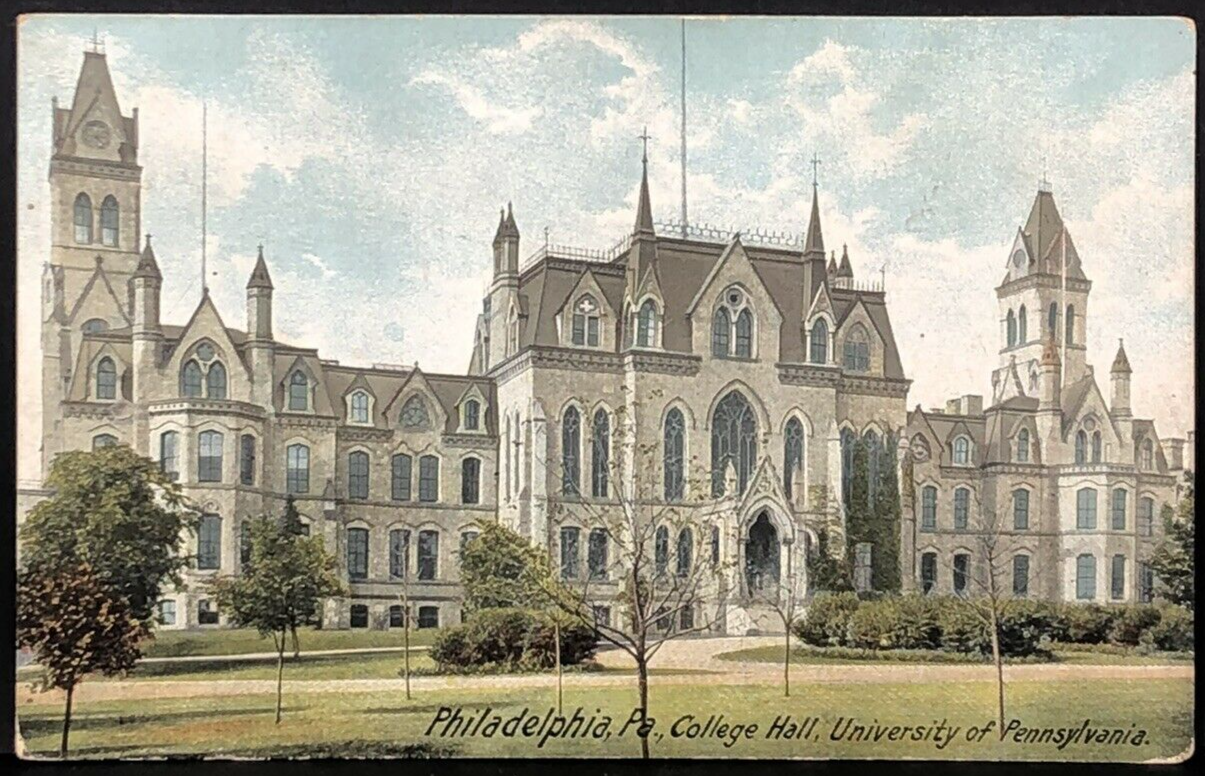
An early postcard view of College Hall, which was designed by Thomas Webb Richards, a professor of drawing and architecture. At the time it was built the building housed almost all of the college functions, including the library, classrooms, laboratories, and offices. Its striking design style is a combination of Second Empire and Gothic.
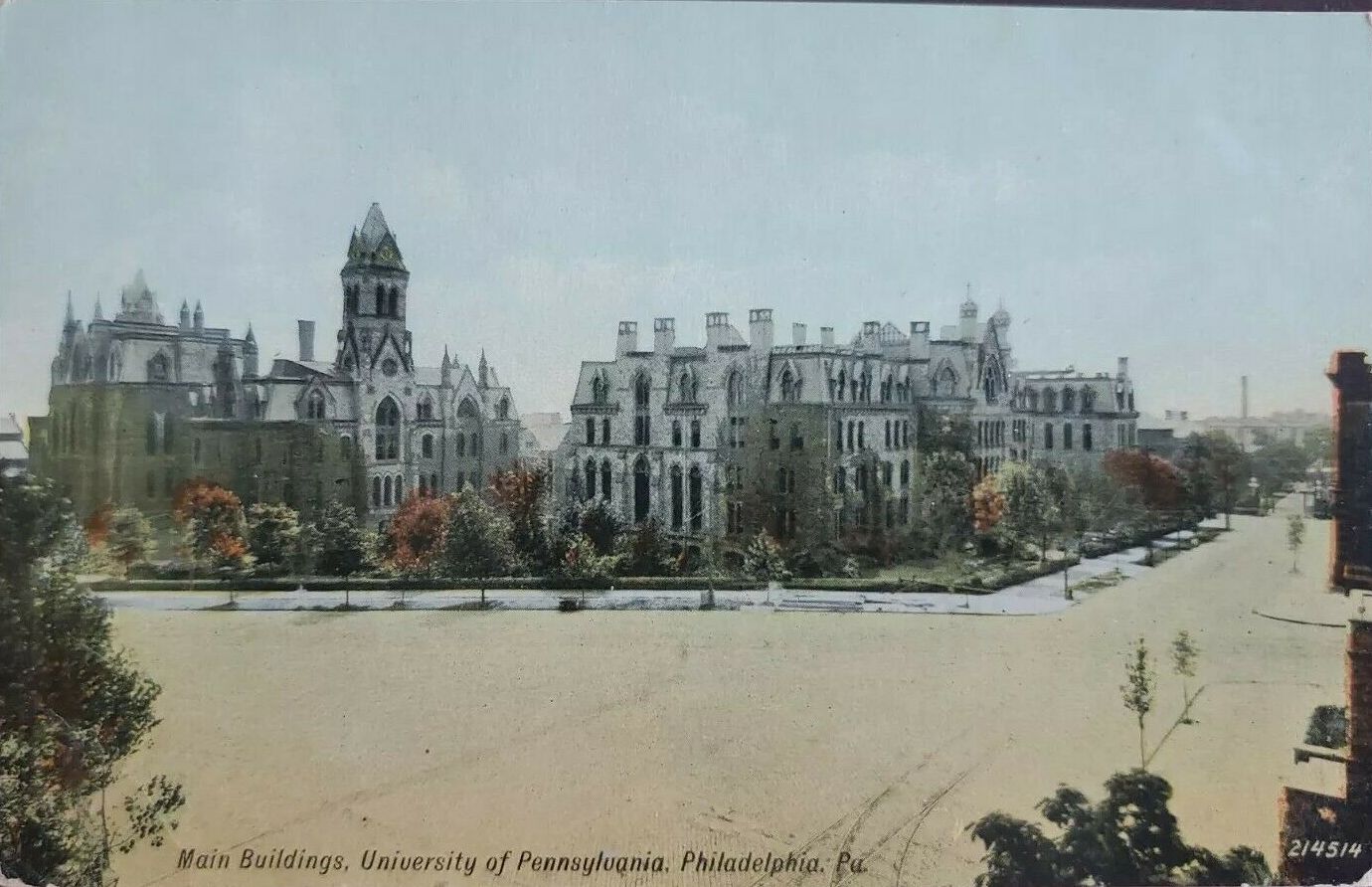
This postcard from 1916 shows College Hall and some other campus buildings. The broad streets seen in the postcard are long gone as the campus has expanded.
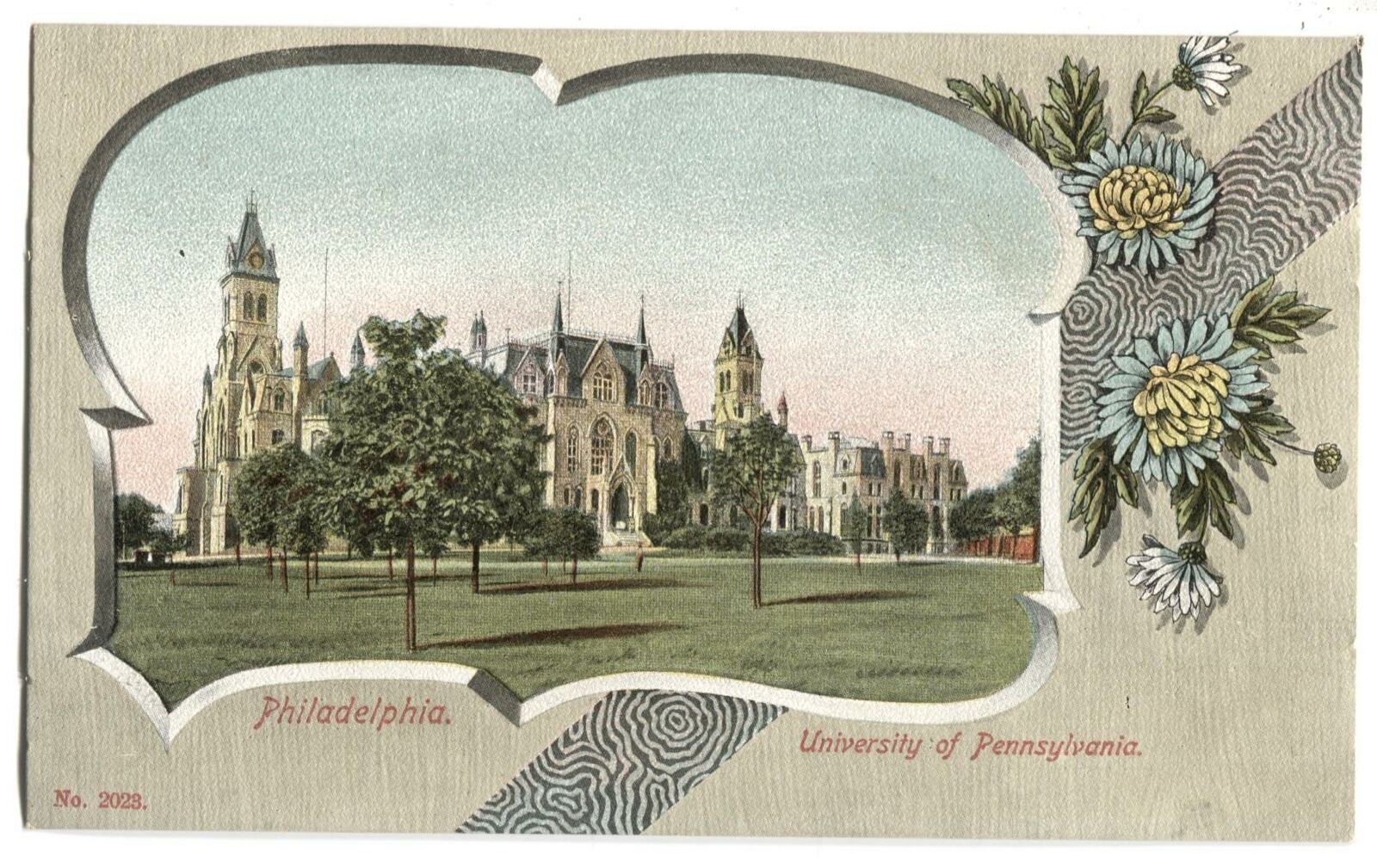
The postcard of College Hall, above, is surrounded by a floral motif.
Although it is counter intuitive today, prior to 1907 it was illegal to write on the back of a postcard. So on postcard prior to 1907 you will sometimes see writing scrawled on the edges or along the top and bottom of the card in any blank spaces. In 1907, the era of "divided back," postcards began when the sender was permitted tow write a note on the left half of the card only, the right side being reserved for the recipient's name and address.
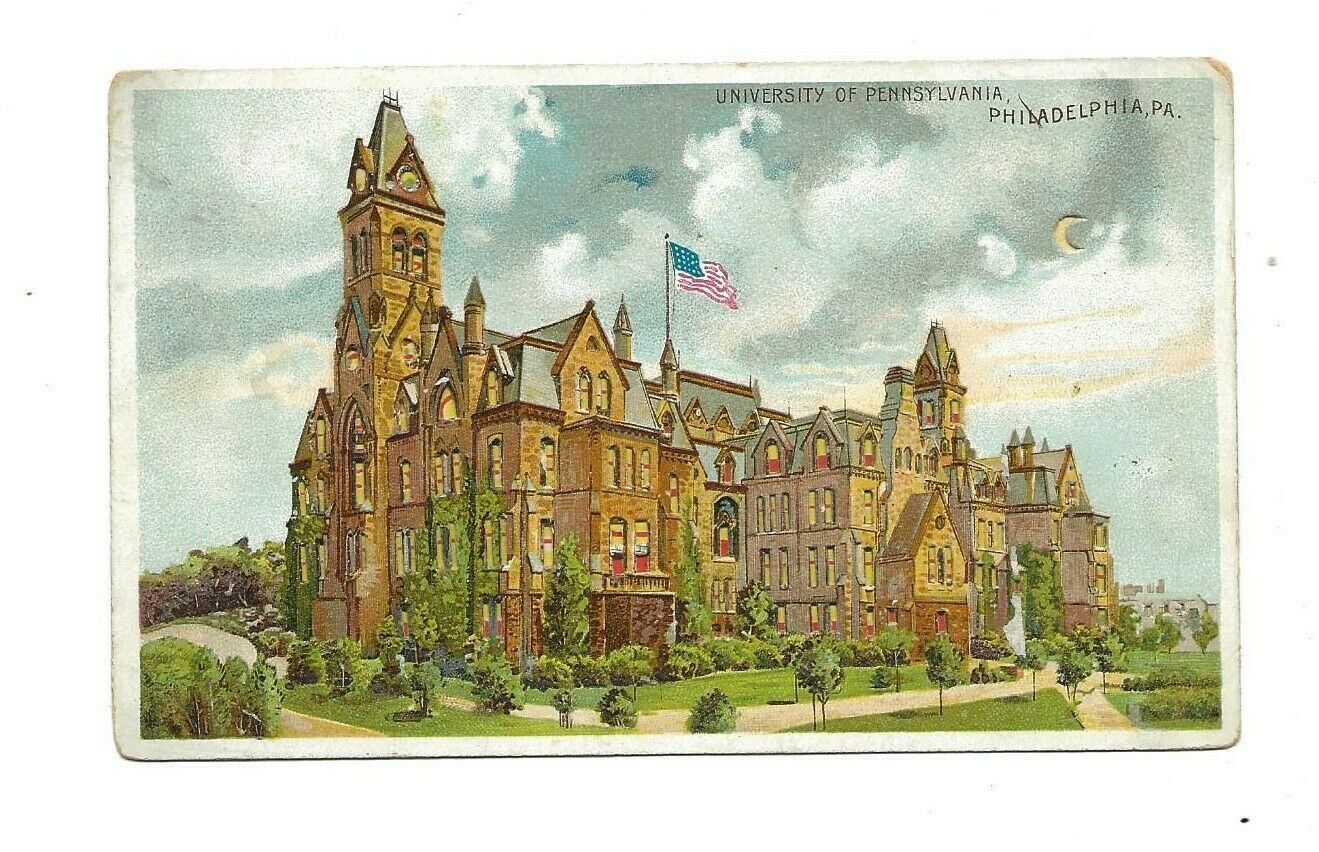
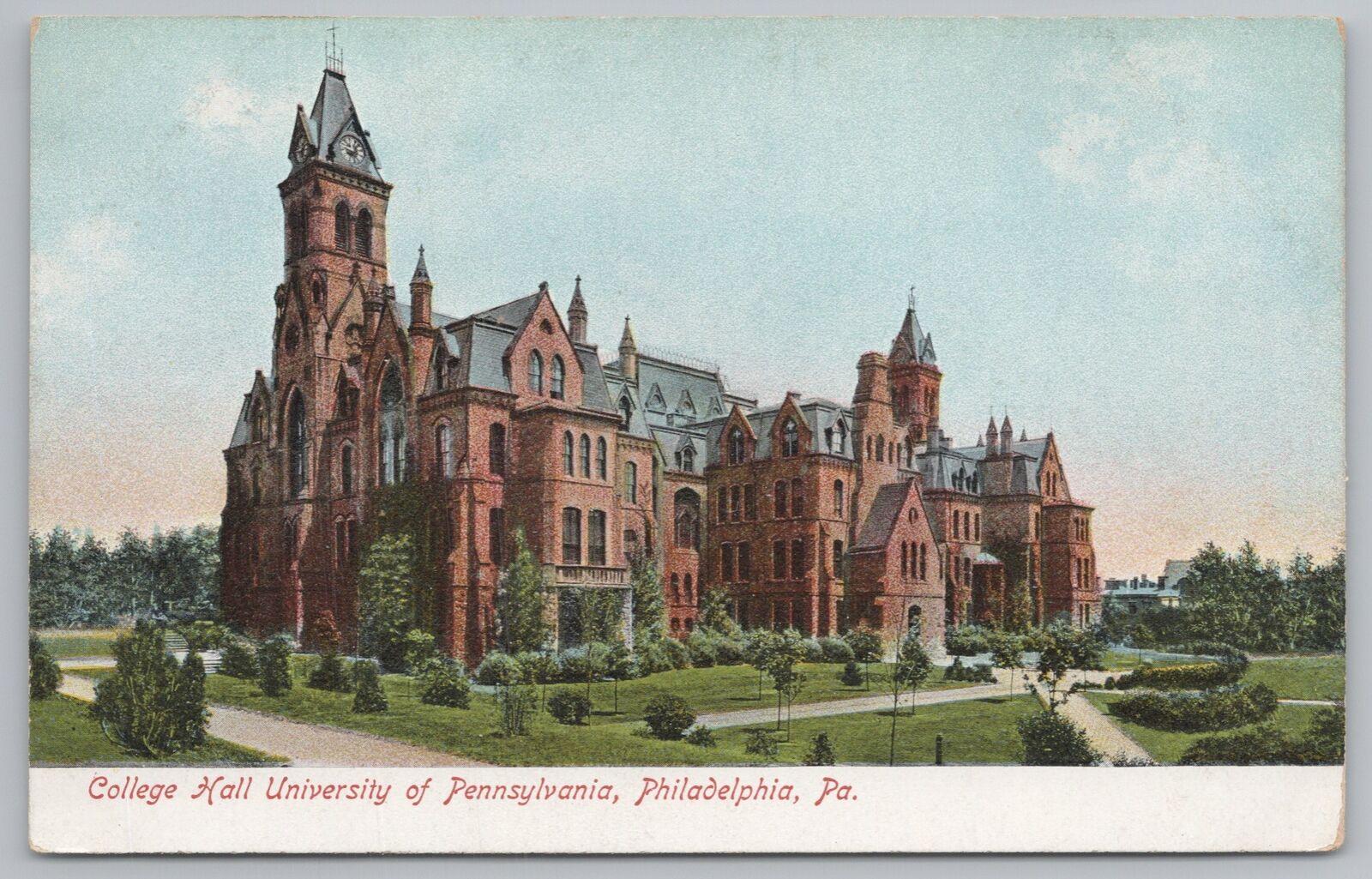
The card on the left is an early colorful night view of College Hall showing a half moon in the sky. The distinctive building is on the National Register of Historic Places. The card on the right shows another view of the massive building. The building is clad in a greenish brick which none of these cards accurately captures, most of them showing is as a brown building. The two towers seen at the top of the building were taken down after several years because they were poorly constructed and kept falling.
It was popular to issue postcards when new buildings were completed on campus. Below are a series of those.
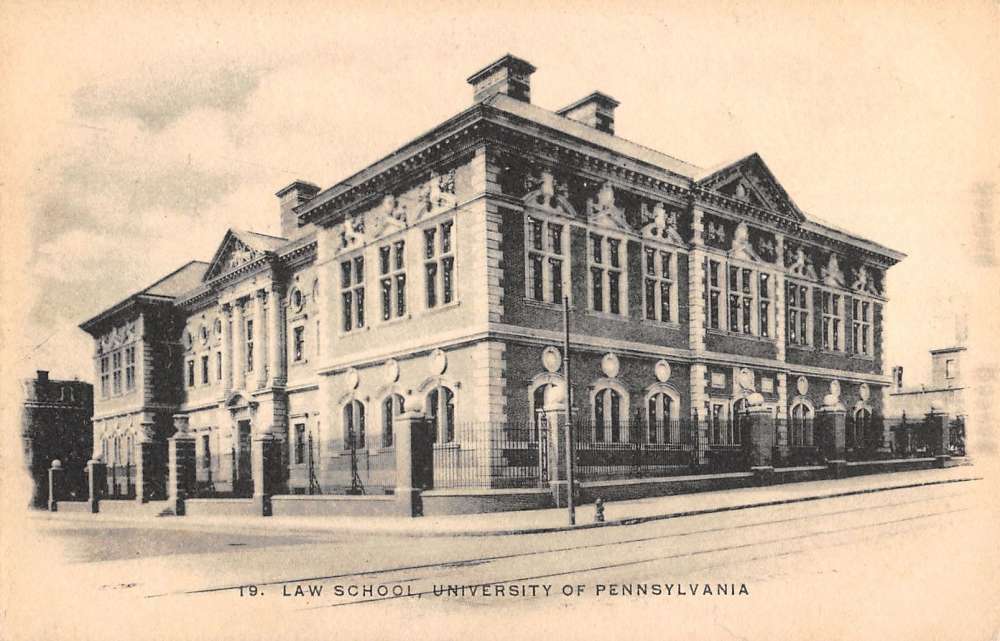
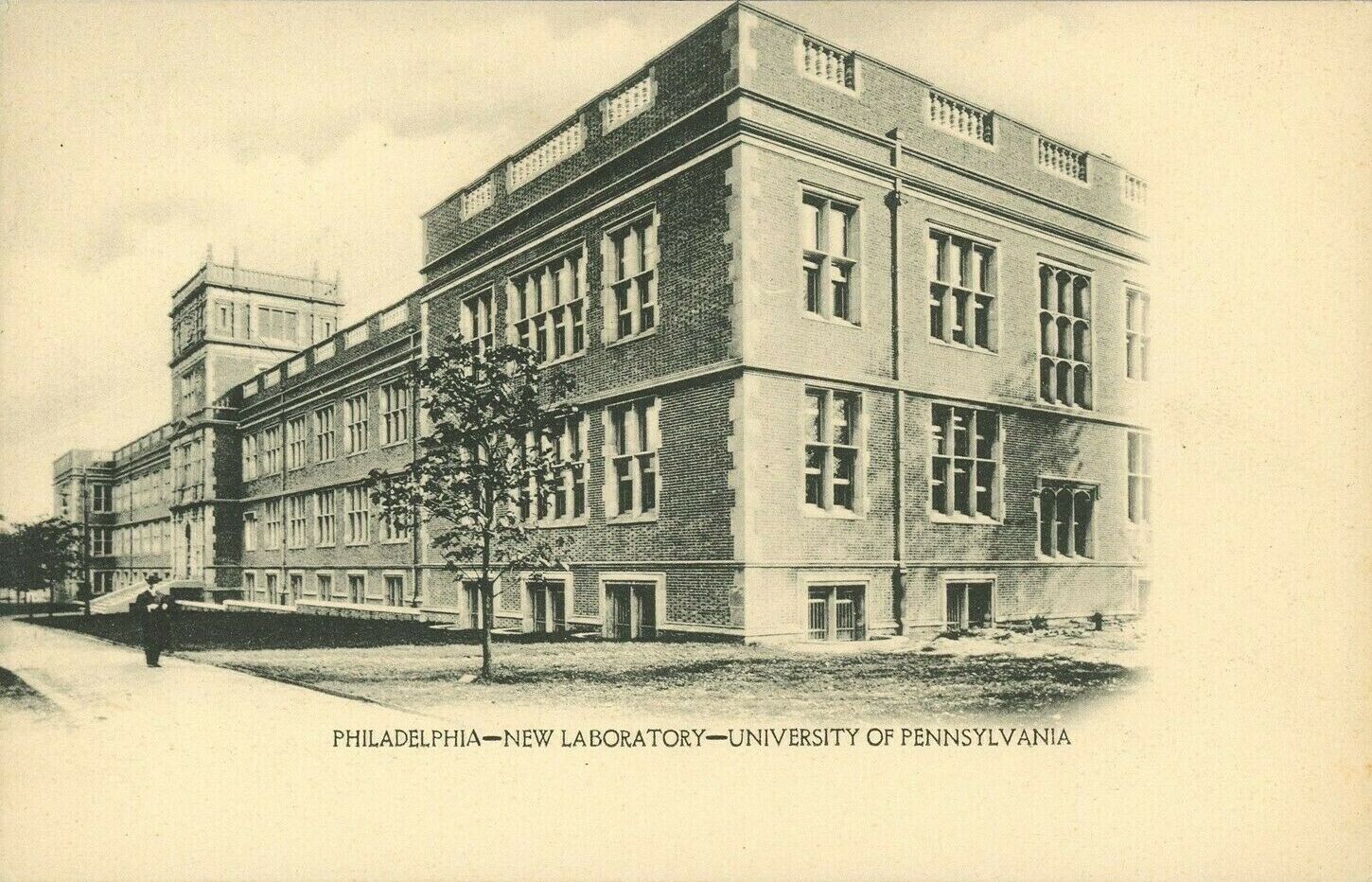
The Law School building depicted on the left in this early postcard was completed in 1900 in the English Baroque style. The "New Laboratory" shown on the right was built in 1904 as a medical laboratory building and is today called the John Morgan Building.
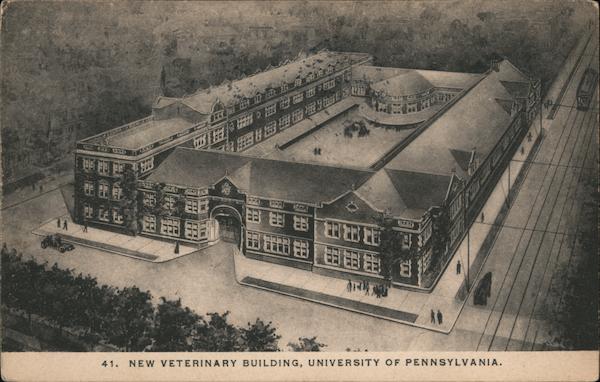
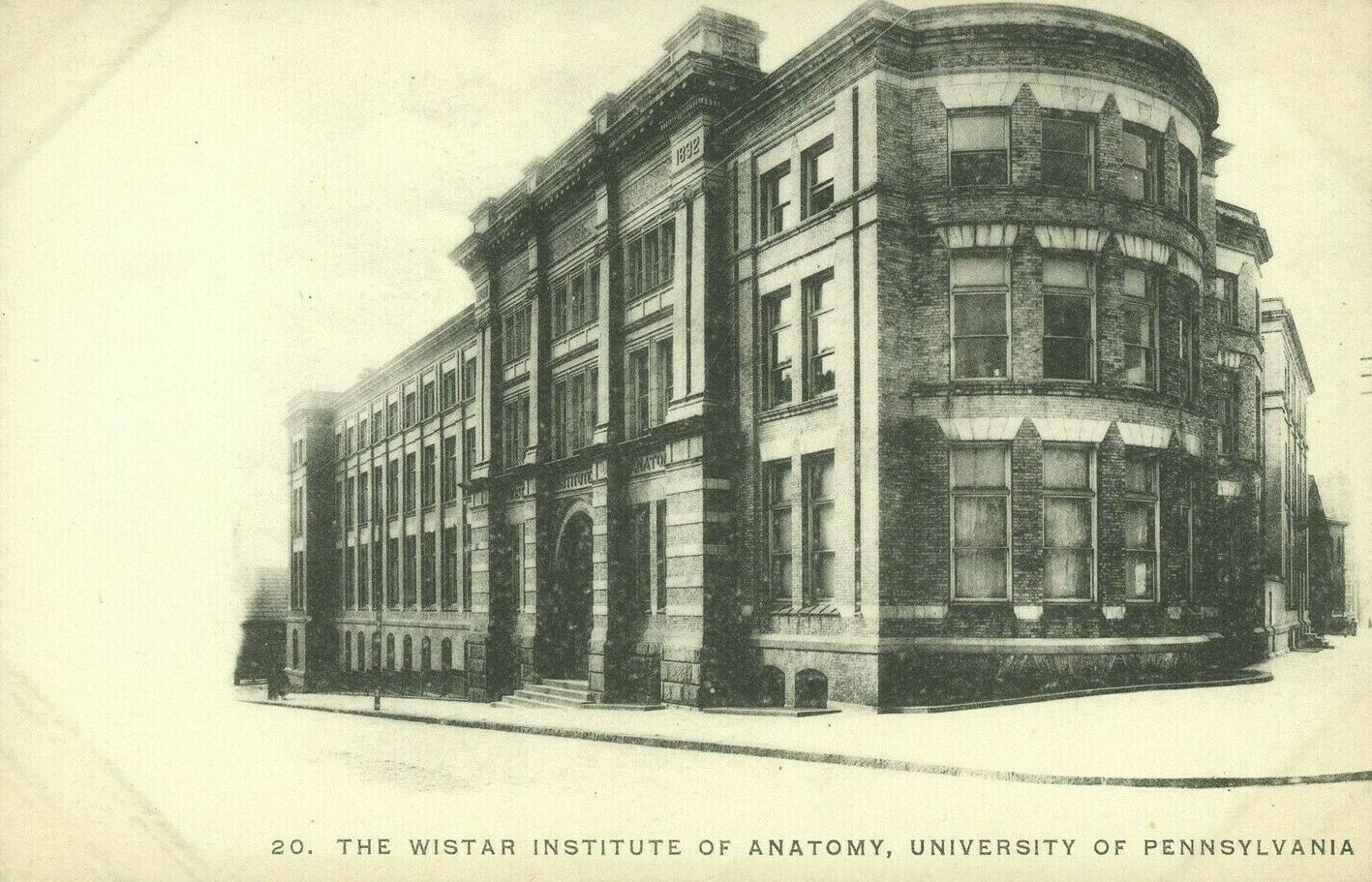
The New Veterinary building is depicted from a birds-eye view on the left and the Wistar Institute of Anatomy is on the right. Wistar is a biomedical research facility and although the postcard states otherwise, it isn't part of Penn. The institute is named for Caspar Wistar, author of the first American textbook of anatomy, and a good friend of Thomas Jefferson. In 1808, Wistar was named Chair of the Department of Anatomy at Penn’s School of Medicine.
Vintage postcards also show off the ivy on many Penn buildings. A nice view of the ivy covered Dormitories and another of Logan Hall are below.
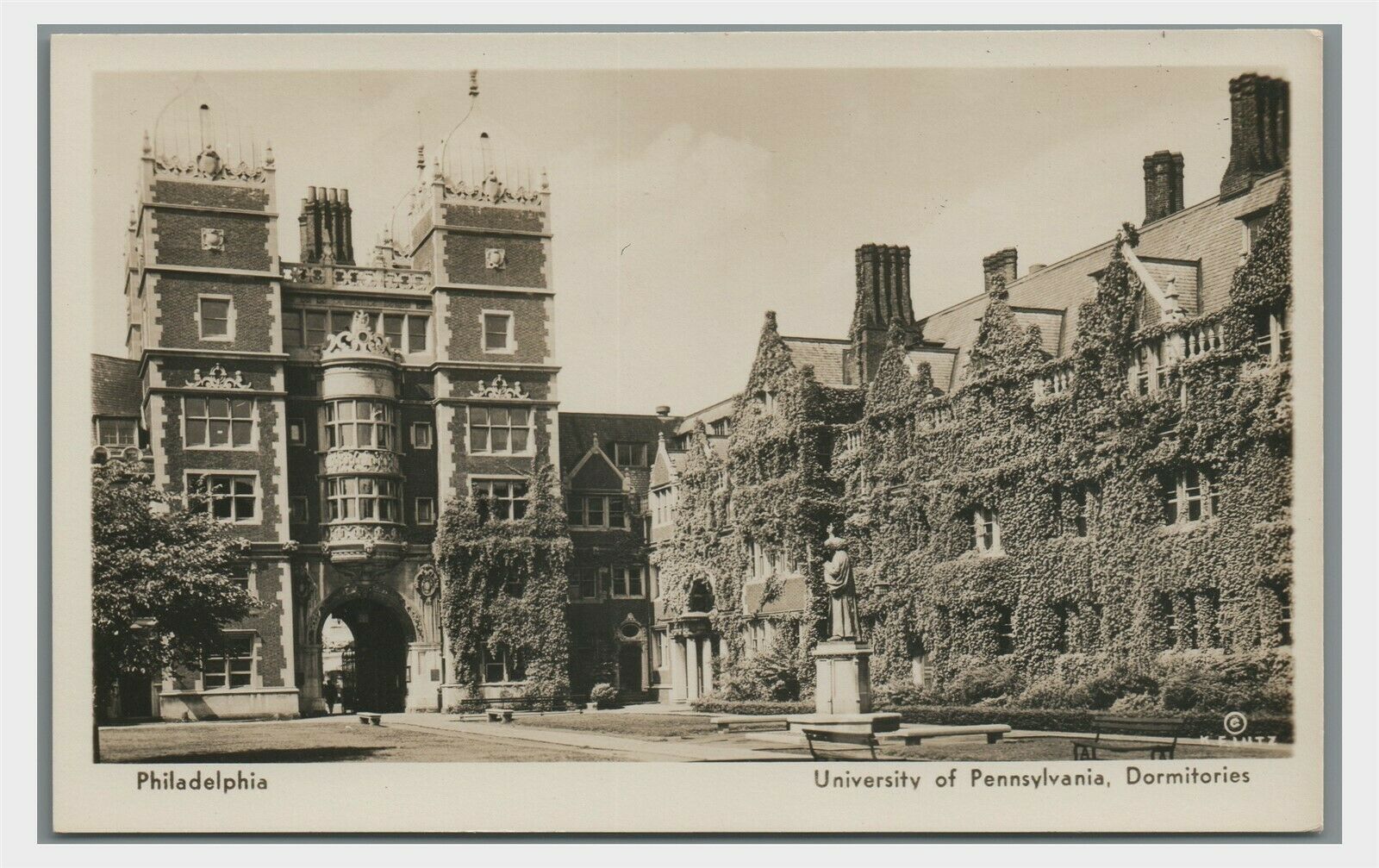
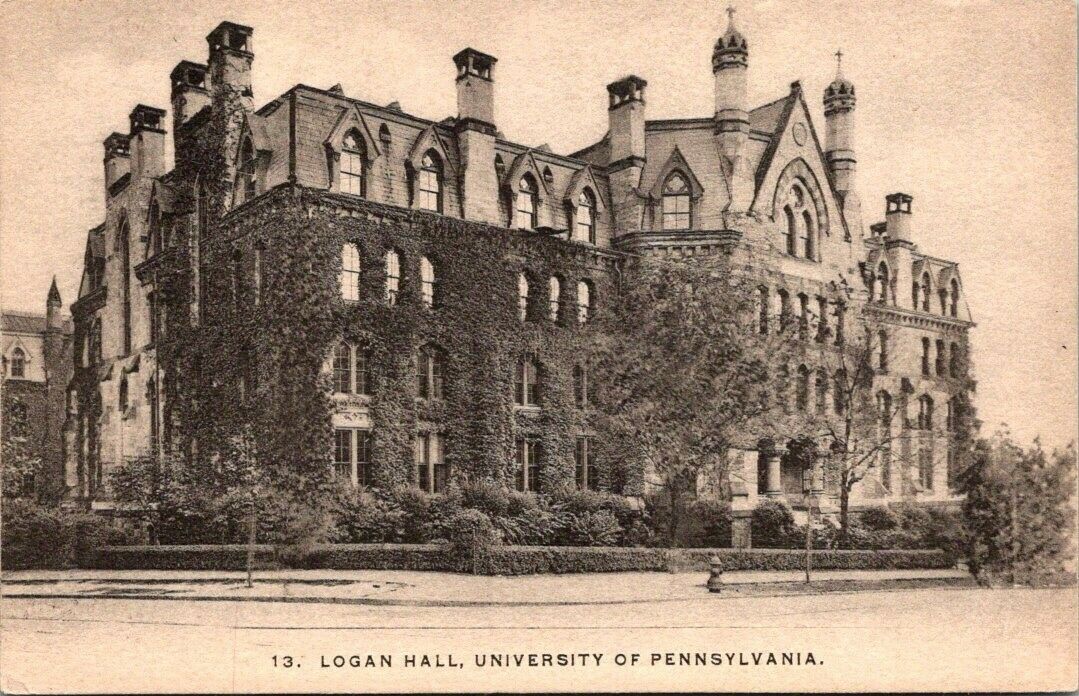
Some of the most beautiful postcards about Penn were done in the early 20th century and depict "College Girls." Many of the leading manufacturers of postcards were companies like the Illustrated Postcard Company or Raphael Tuck & Sons Inc. They issued series of postcards for Eastern Universities featuring the "College Girl" or "University Series," with women in long Victorian-style dresses. The cards are appropriate for Penn because they admitted women, whereas many schools such as Princeton and Yale had "College Girl" postcards and did not.
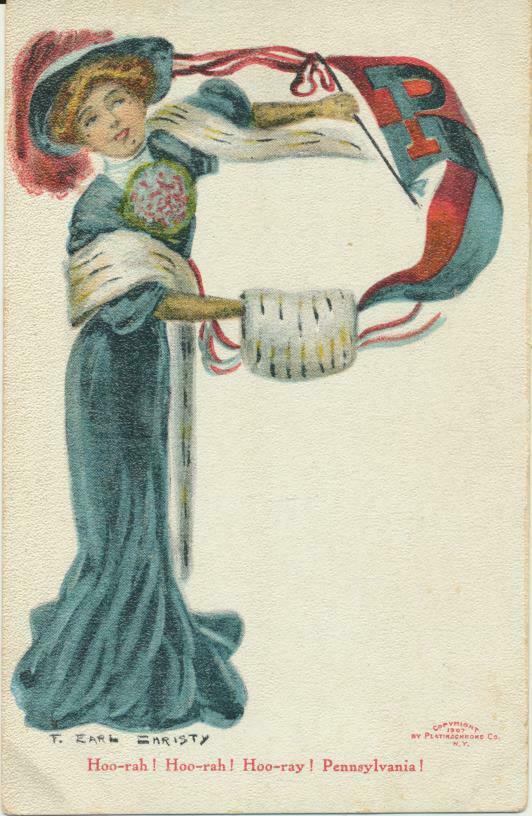
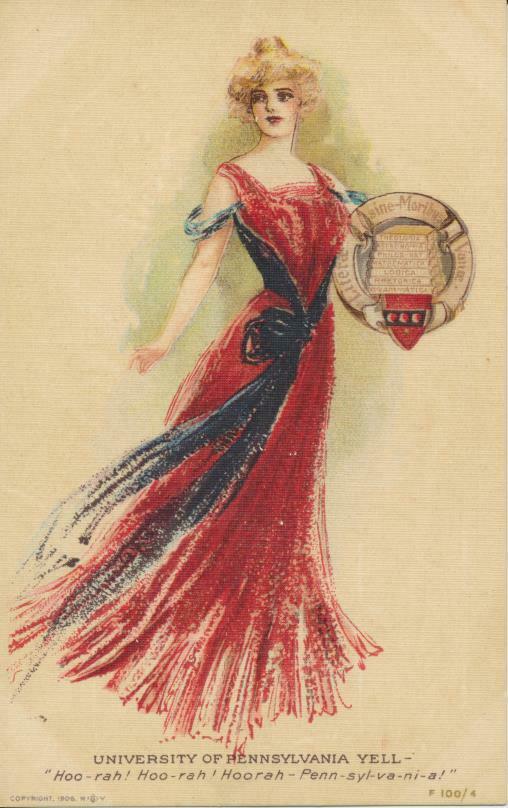
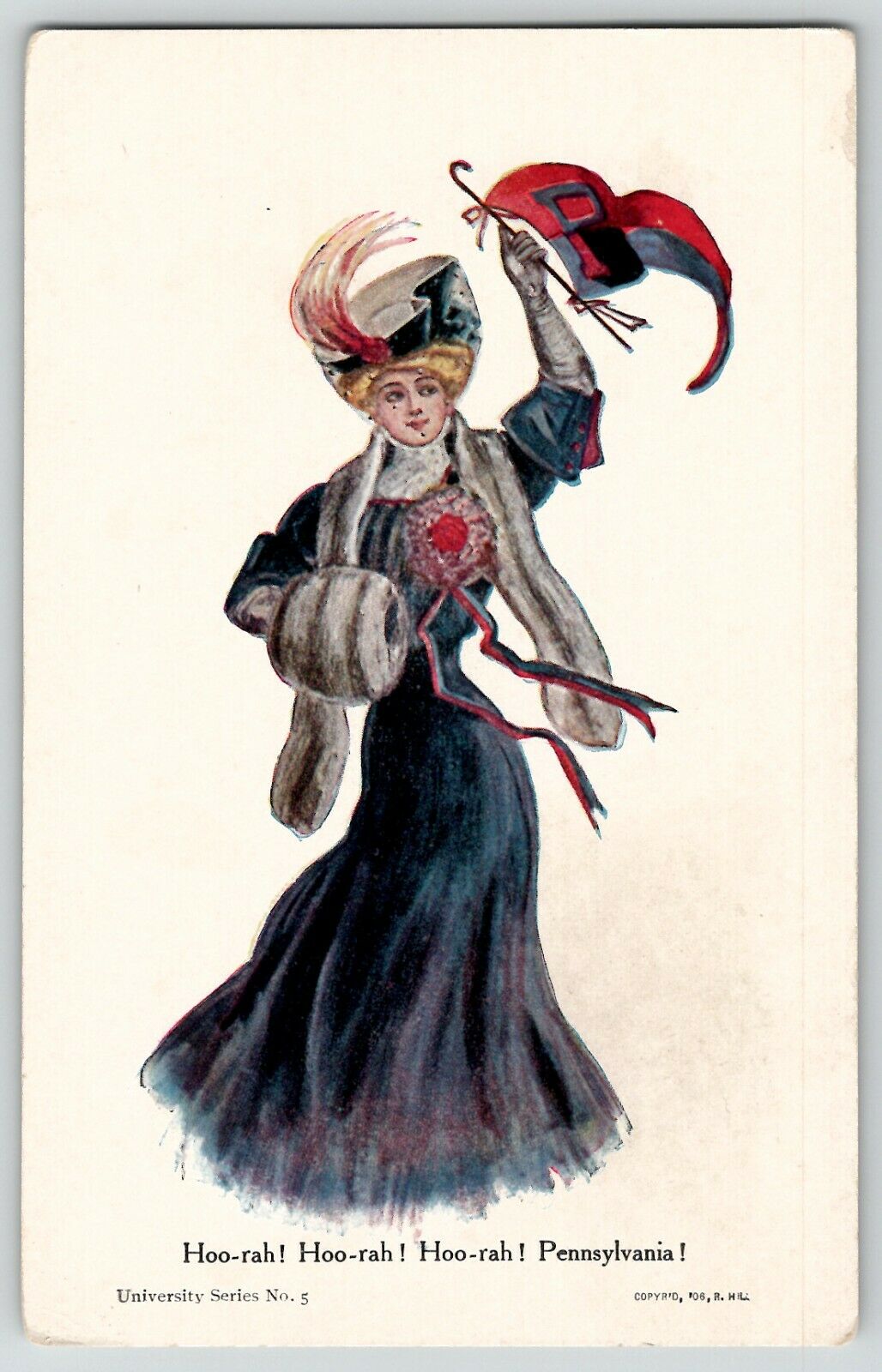
The postcard on the left was done by F. (Frederic) Earl Christy, a well known illustrator of the iconic "College Girl" postcards. Christy was born in Philadelphia in 1882. At age 17, he did illustrations and paintings for the Boardwalk Atlantic City Picture Company, with many of his early works published by the J. Hoover and Sons Calendar Company of Philadelphia. He attended the Pennsylvania Academy of Arts from 1905-1907. His first College Girl postcard series was published in 1905 by the U.S.S. Postcard Company.
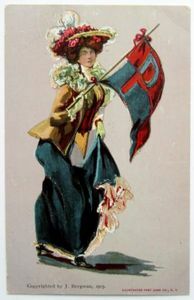
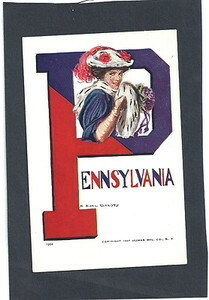
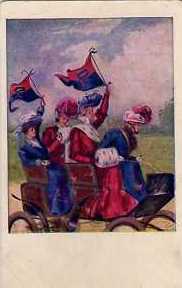
The card on the right is another Christy design. All of the College Girl style postcards show off Penn's colors of red and blue.
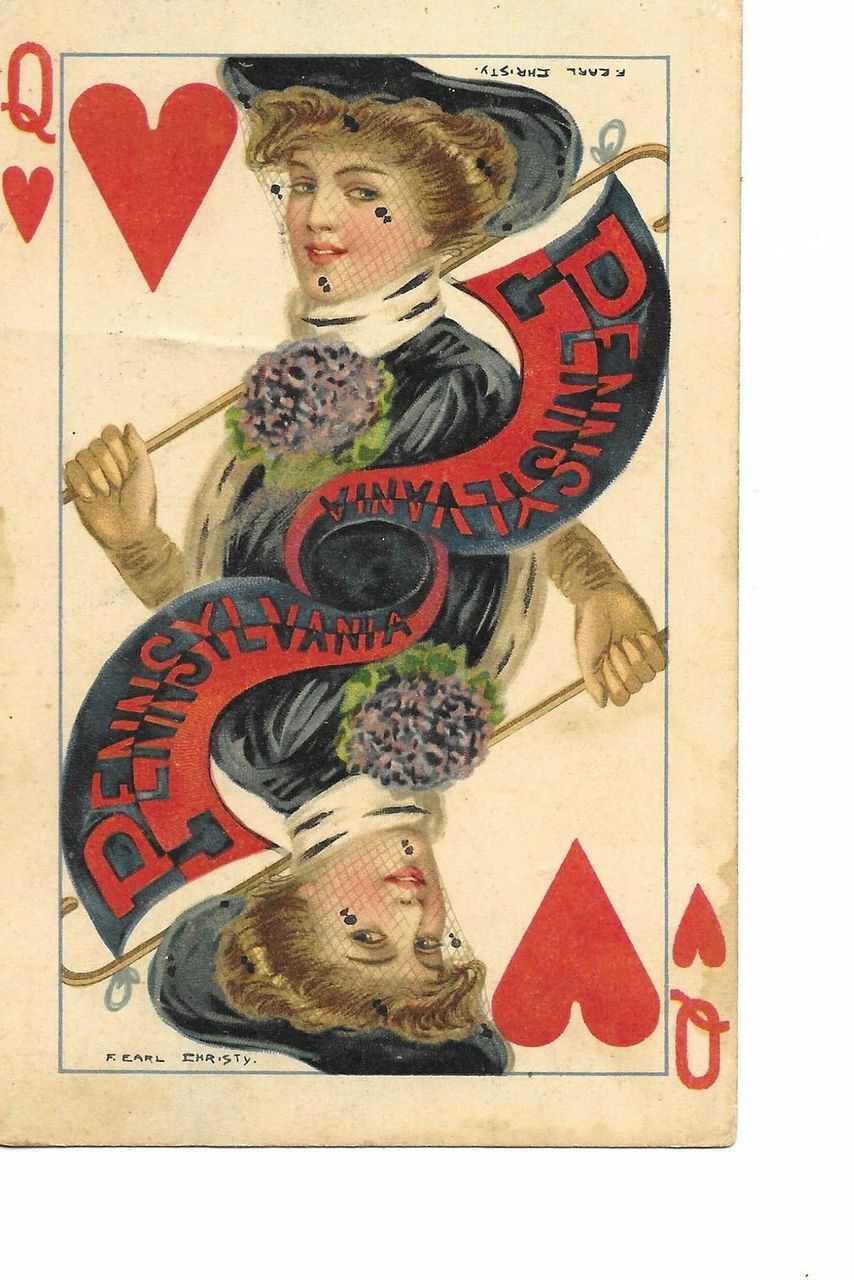
This rare F. Earl Christy designed postcard has a playing card theme with the Queen of Hearts
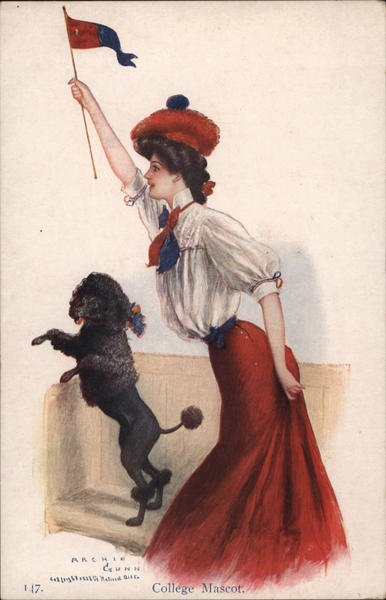
An usual postcard from 1907 shows a college girl dressed in blue and red with a U of P flag and a black poodle!
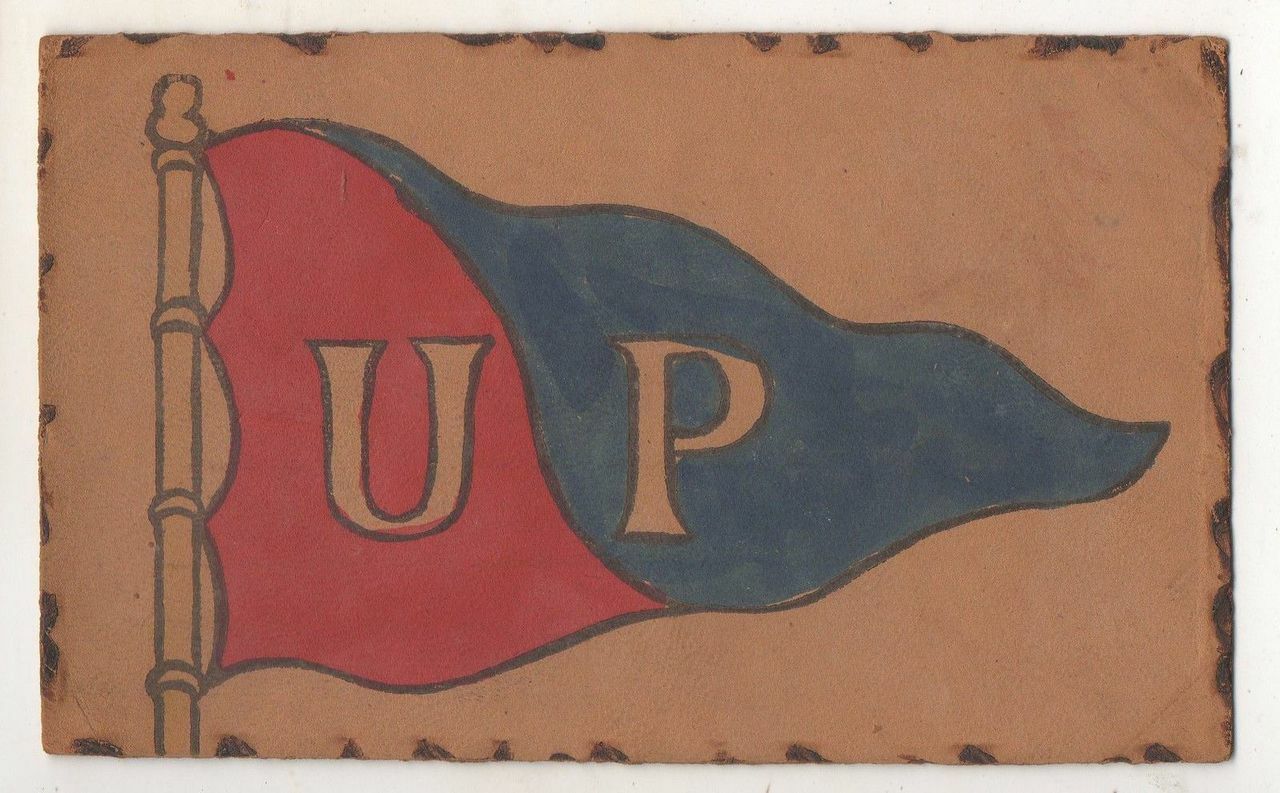
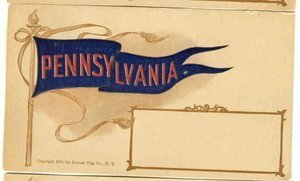
Pennants were another theme of early postcards. The one on the left was made of leather, as was the college girl below. Men weren't entirely excluded, as this early postcard from the Ullman Manufacturing Company of New York City shows a Penn footballer in action.
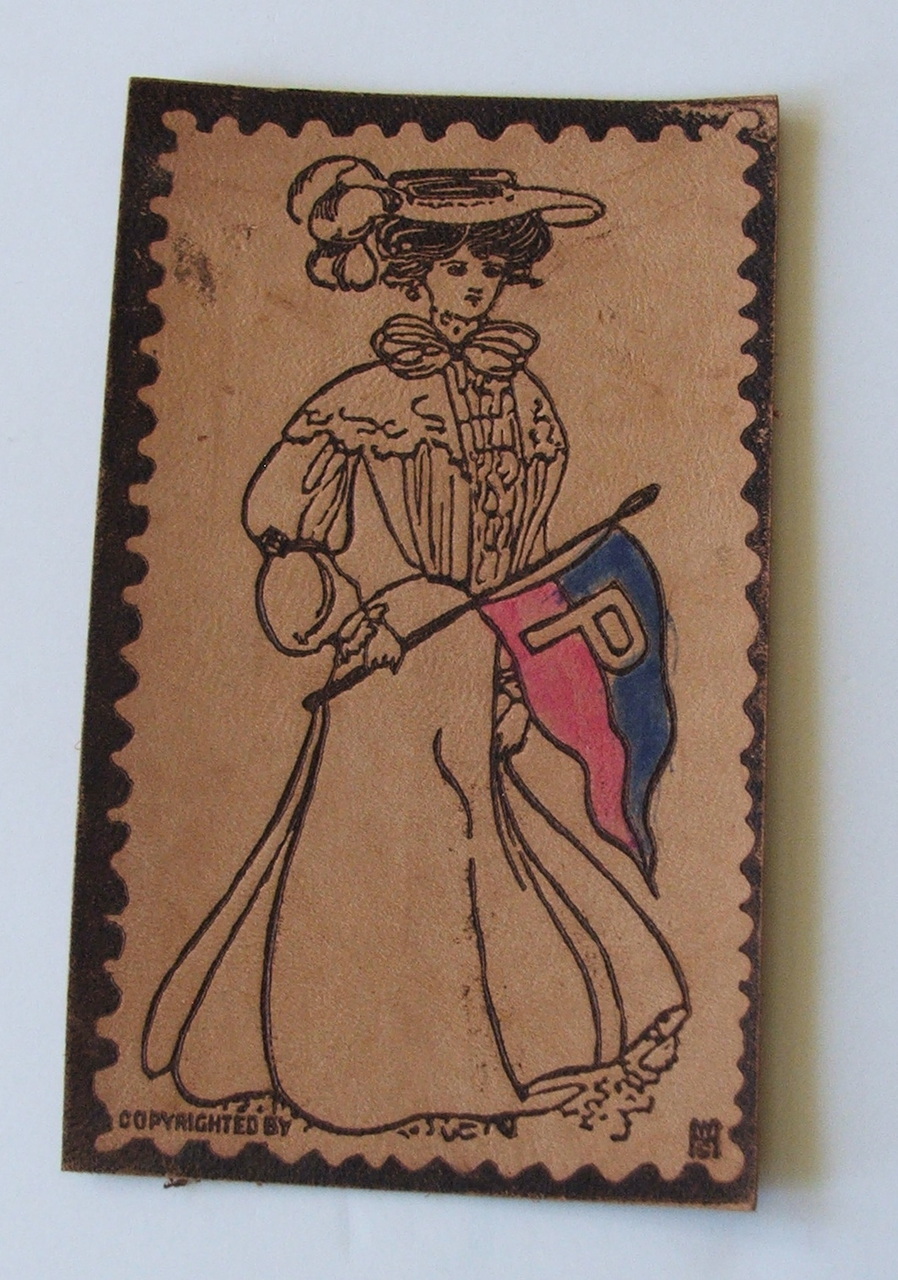
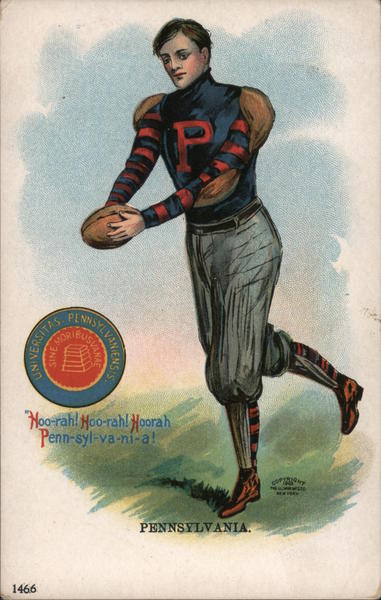
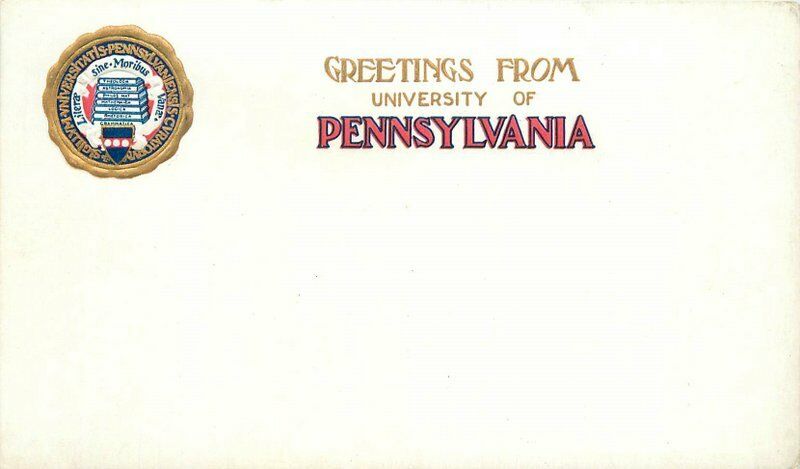
This plain card features the school's seal on the upper left. According to Penn's website the school's seal is different than its coat of arms.
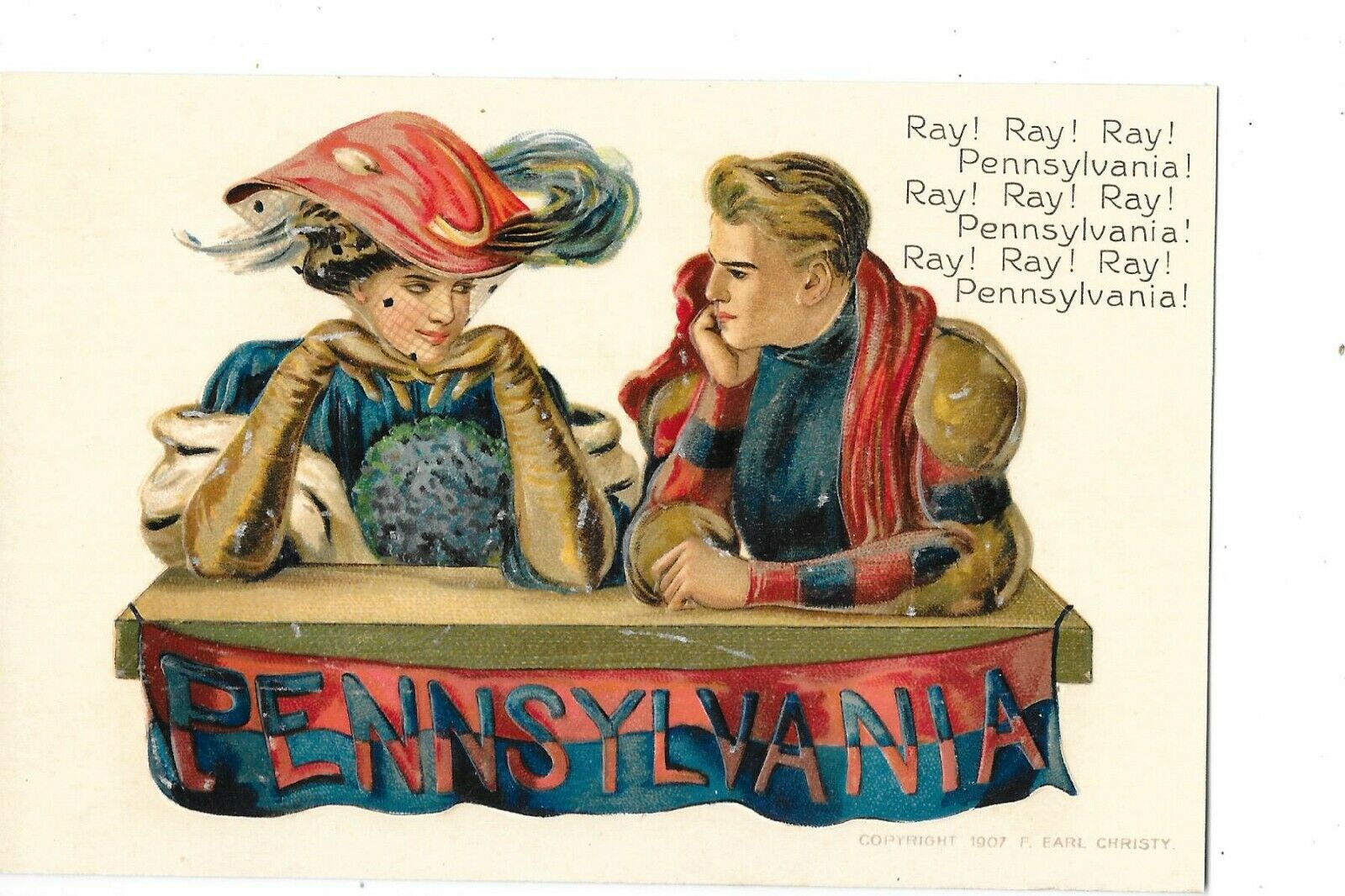
A beautiful F. Earl Christy postcard with two students gazing at each other
Franklin Field was a popular subject of early postcards. The view at left below can be dated to the 1910s-1920s based on the vintage automobiles seen. The card on the right was made from linen. The Smithsonian Museum generally dates “Linen” postcards to the 1930s through 1945 and technically aren’t even made from linen. “Linen” describes a higher than usual content of cotton fiber in the paper utilized that gives the cards their distinct texture. We especially like the color that linen postcards have.
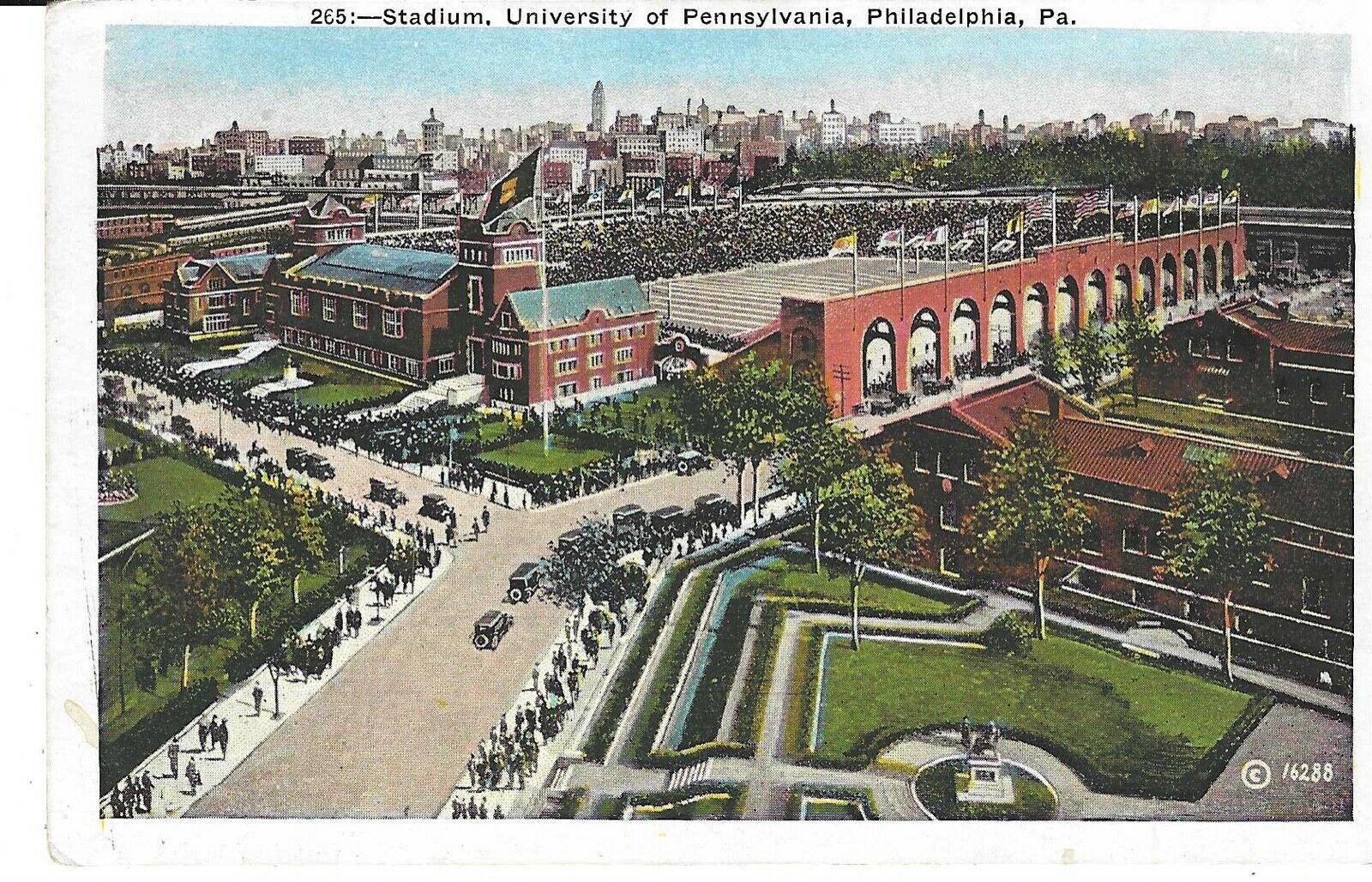
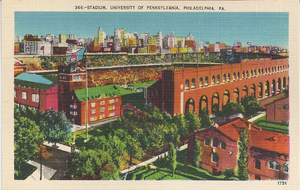
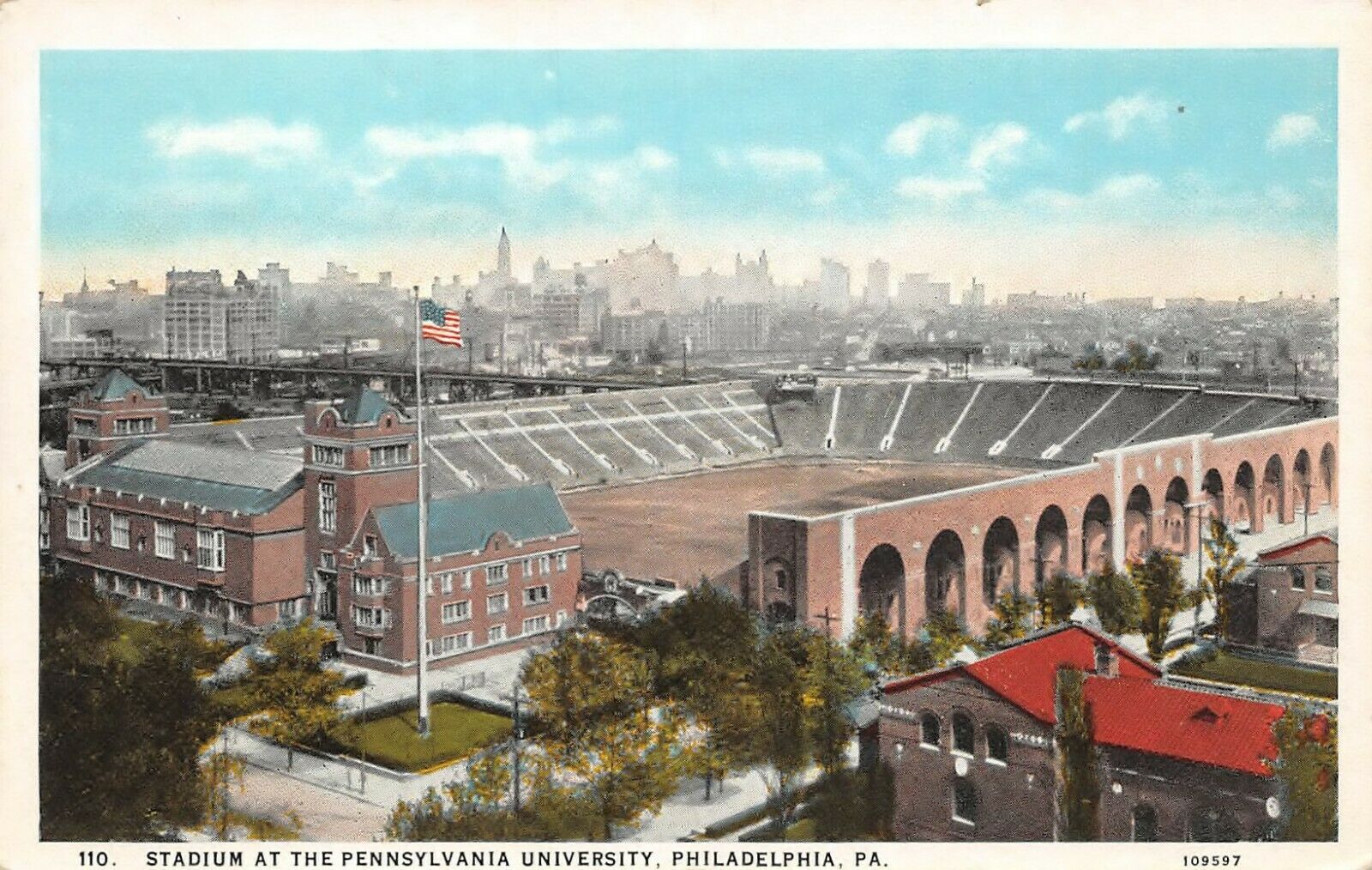
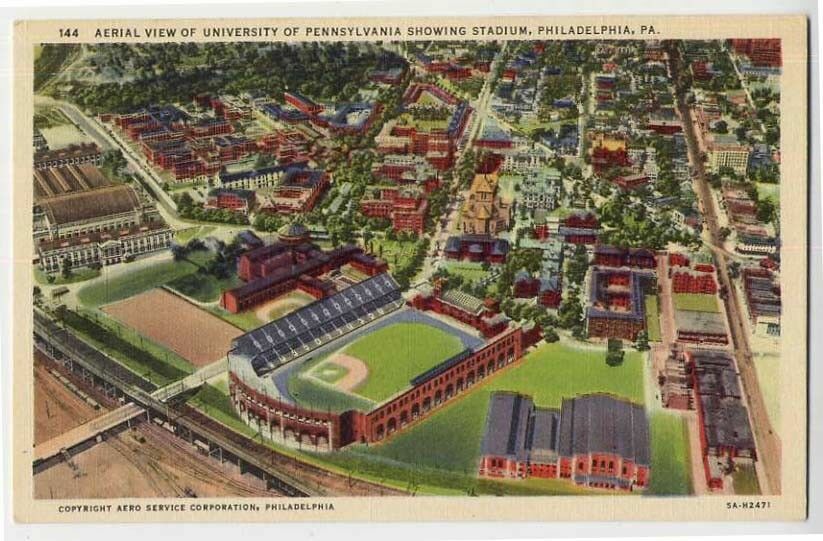
This unusual card (above, left) of Franklin Field shows a brown field and a hazy Philadelphia skyline. The aerial view of Franklin Field and the campus (above, right) is linen.
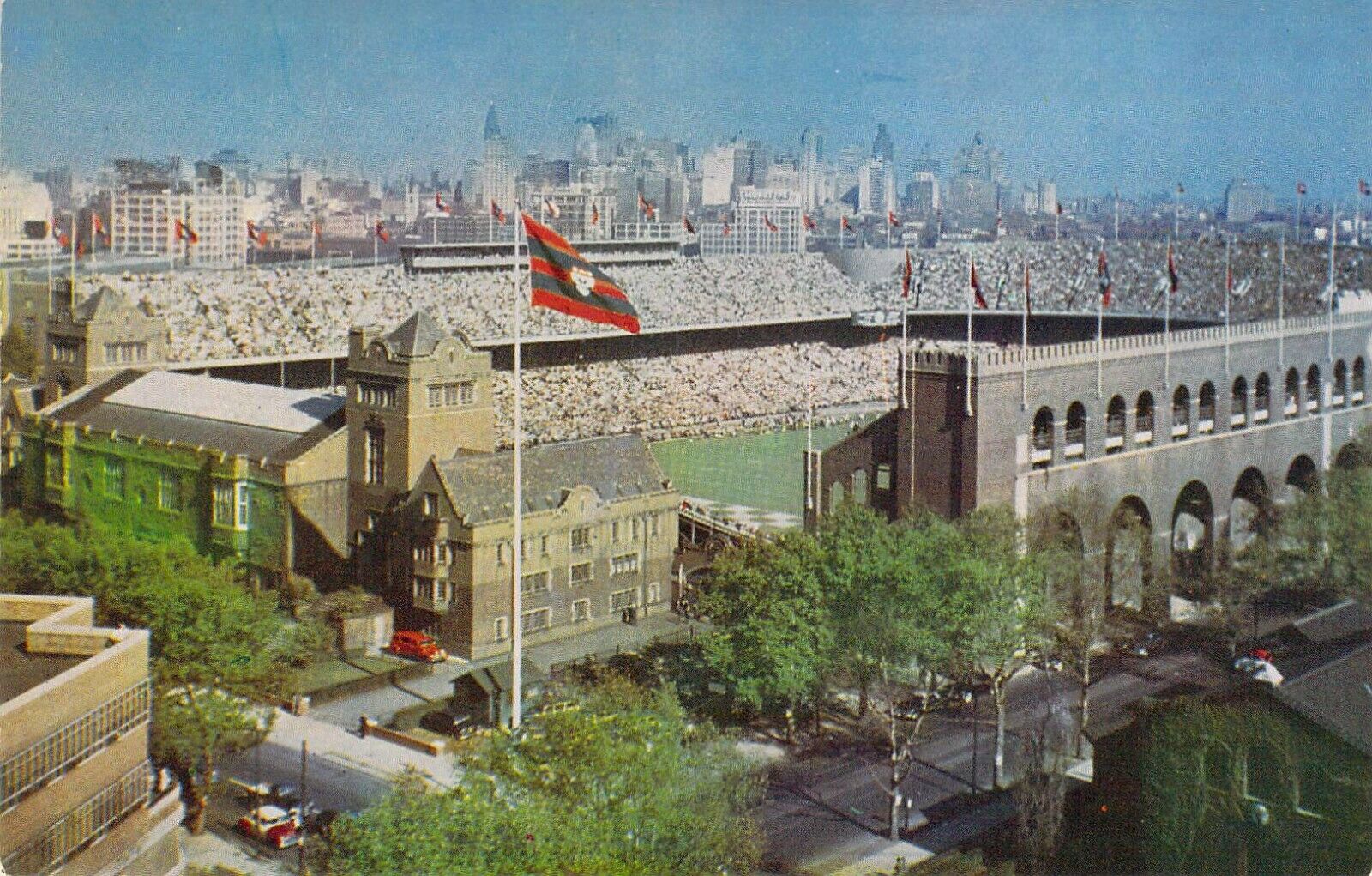
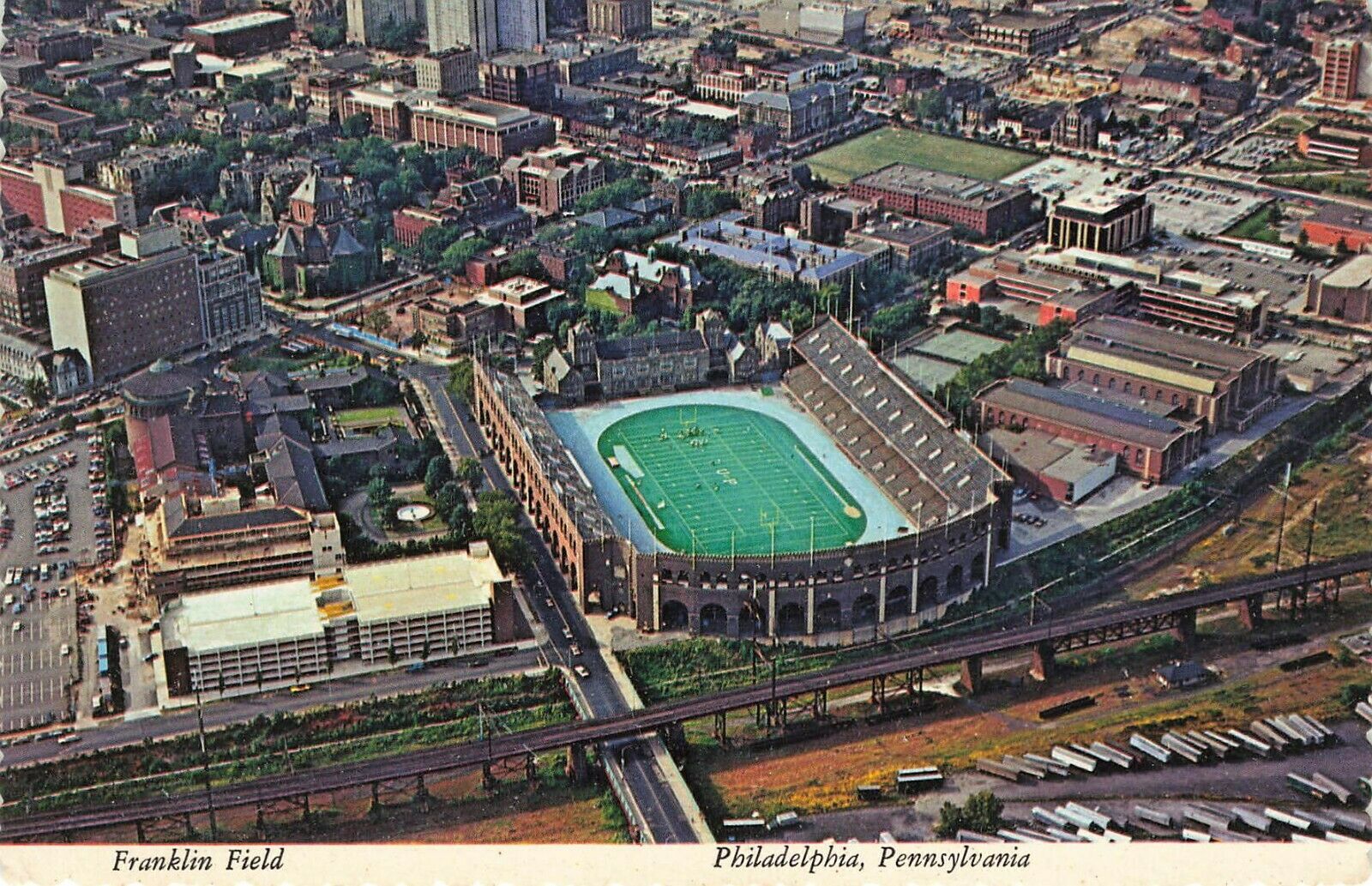
This 50s era postcard (above, left) of Franklin field has a nice view of the low-slung Philadelphia skyline where no building was allowed to be taller than the statue of Ben Franklin atop City Hall. That regulation was subsequently eliminated and skyscrapers were built. Postcards of Franklin Field remained popular right up until the 1970s as seen in this specimen on the right, above.
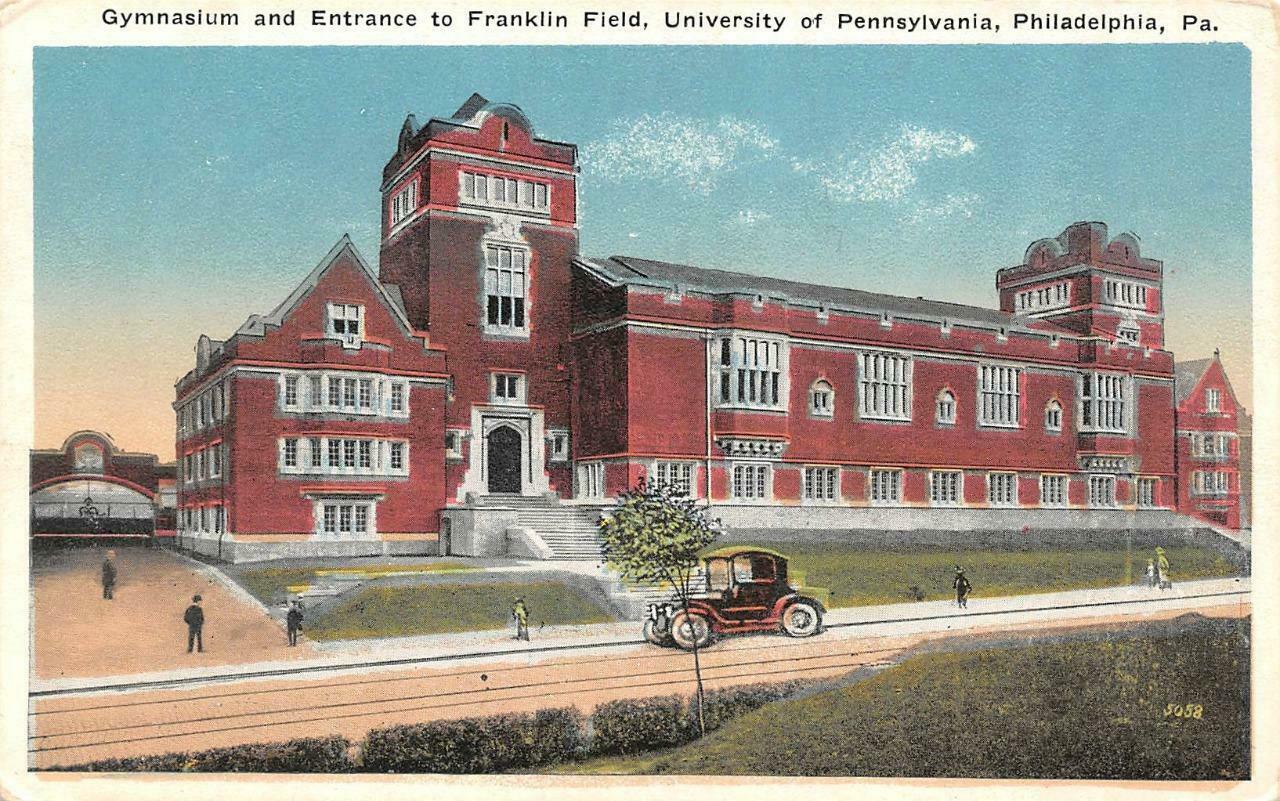
We couldn't resist one more specimen of Franklin Field, just to show off the very early automobile parked outside the gymnasium.
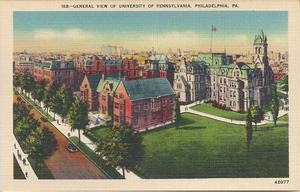
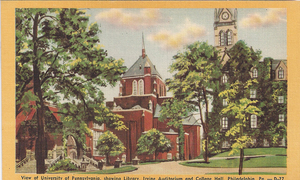
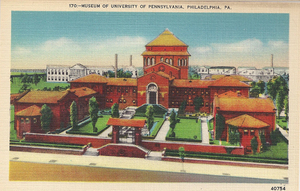
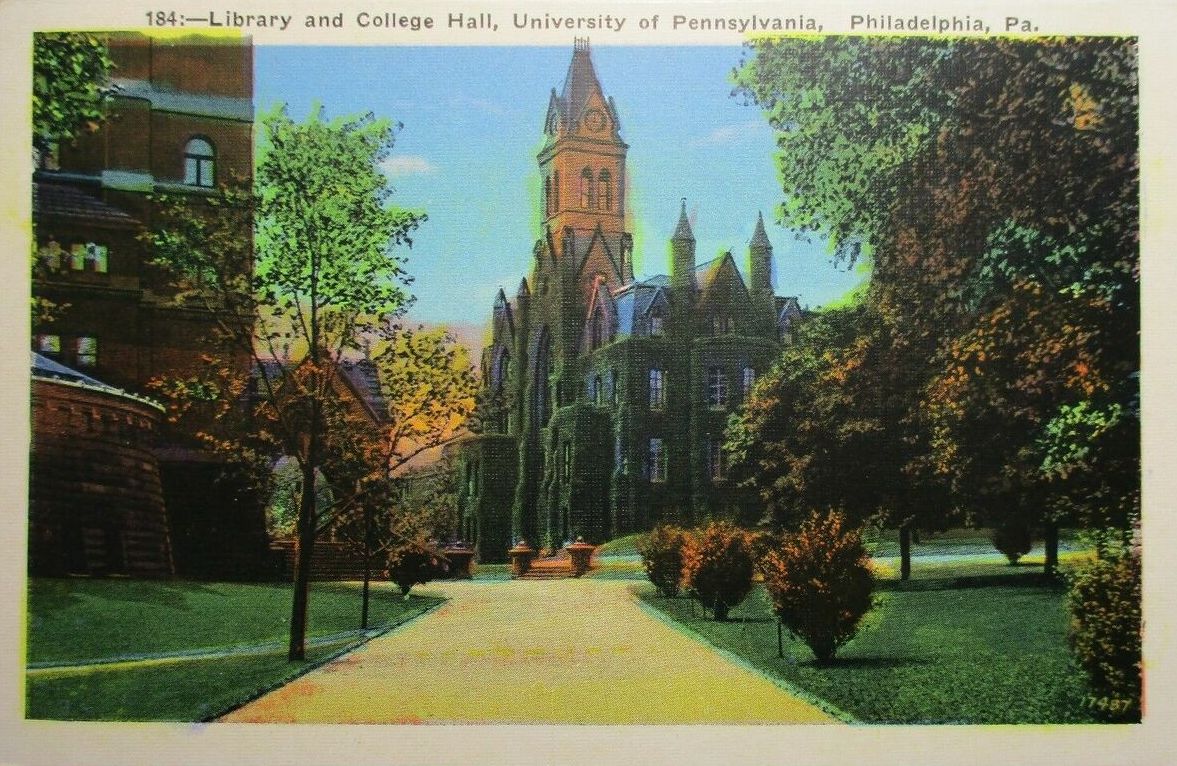
Four additional linen postcards, above, showing various campus views including the museum lower left. The museum specializes in Archaeology and Anthropology with a large collection of items from ancient Egypt, Greece, and Italy, Mesopotamia, Asia, Africa, and the Americas

This unusual tri-fold panoramic postcard gives a nice black and white view of the dormitories at Penn
The University of Pennsylvania established the first hospital and the first medical school in the country so it is only appropriate to show some hospital postcards, although none are particularly vintage.
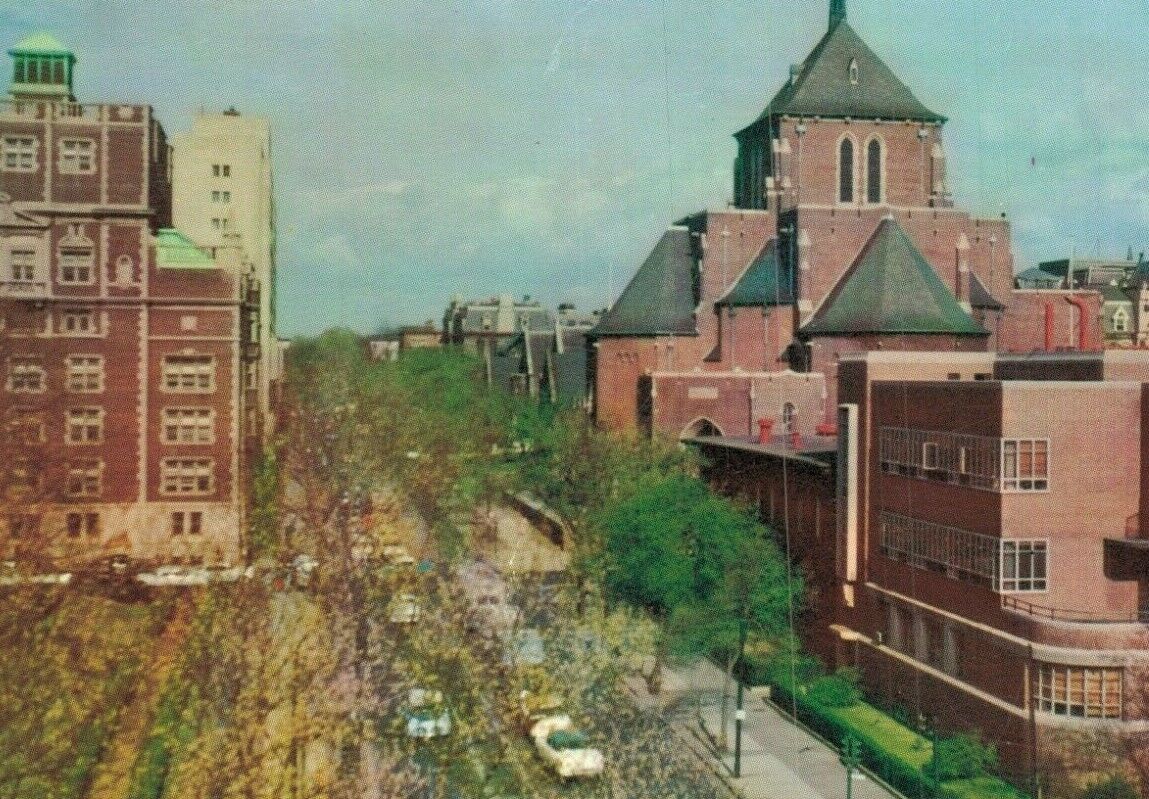
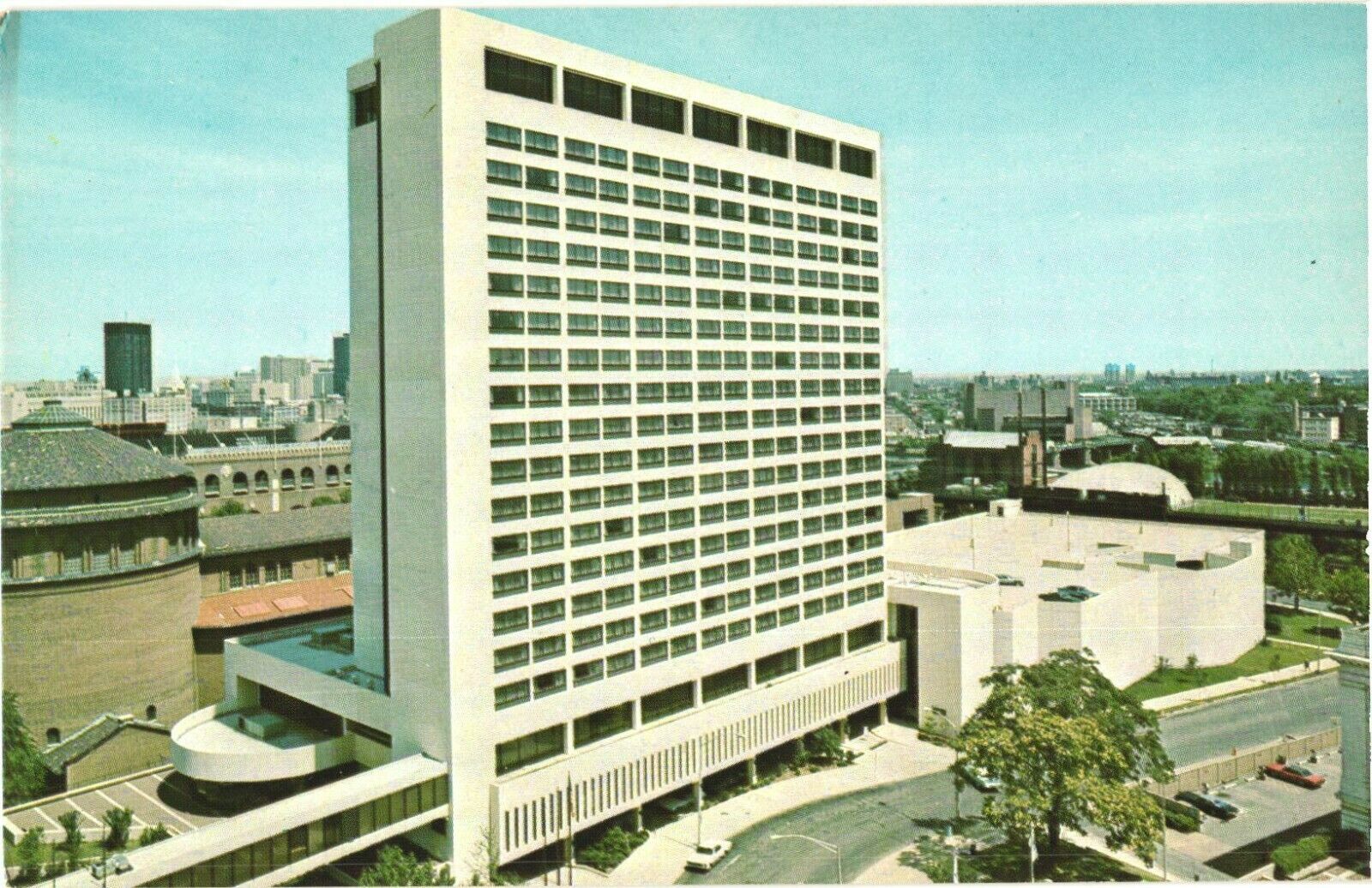
The postcard on the left shows the buildings in the Penn hospital complex in the 1970s. The postcard on the right shows the old Hilton Hotel which was subsequently converted into Penn Tower and used by the Hospital of the University of Pennsylvania. The building has subsequently been demolished and replaced by the cutting edge Pavillion building in 2021.
Interior views of early buildings were rare for postcards, although we found two examples of early Penn buildings.
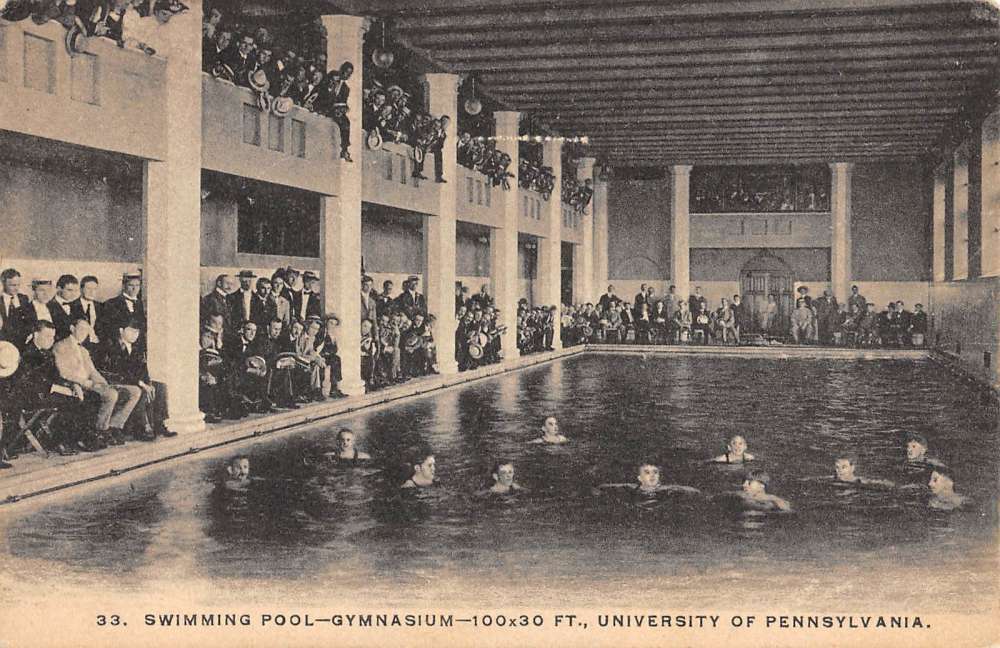
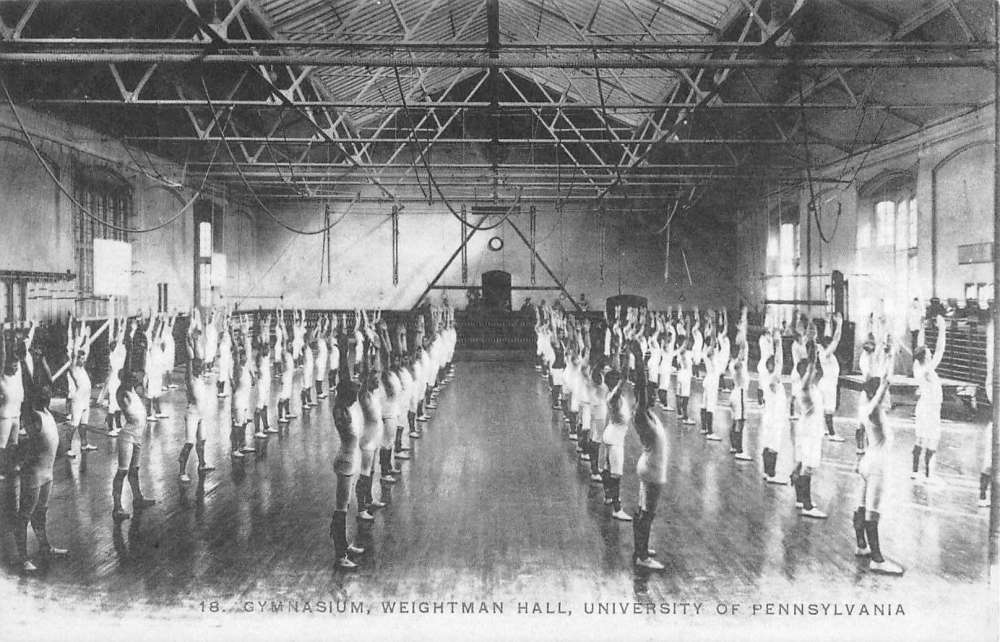
Both are classic images. The one on the left shows scores of well dressed spectators looking at what is presumably a swimming match and the card on the right shows a large organized gym glass.
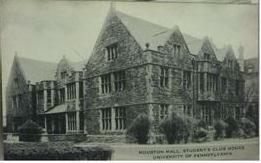
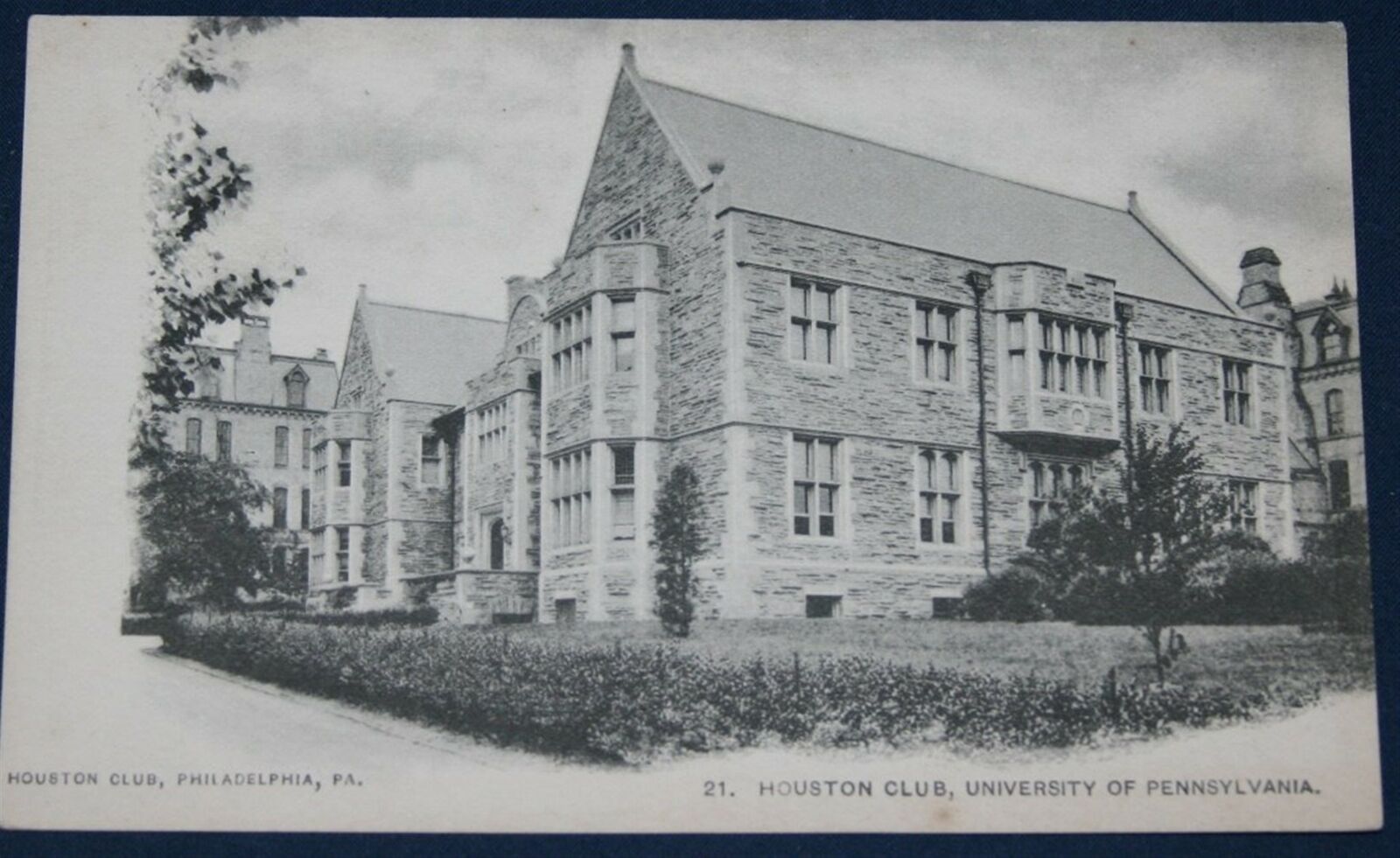
Two images of Houston Hall, also known as the Houston Club. Early postcards were sold at the Houston Club.
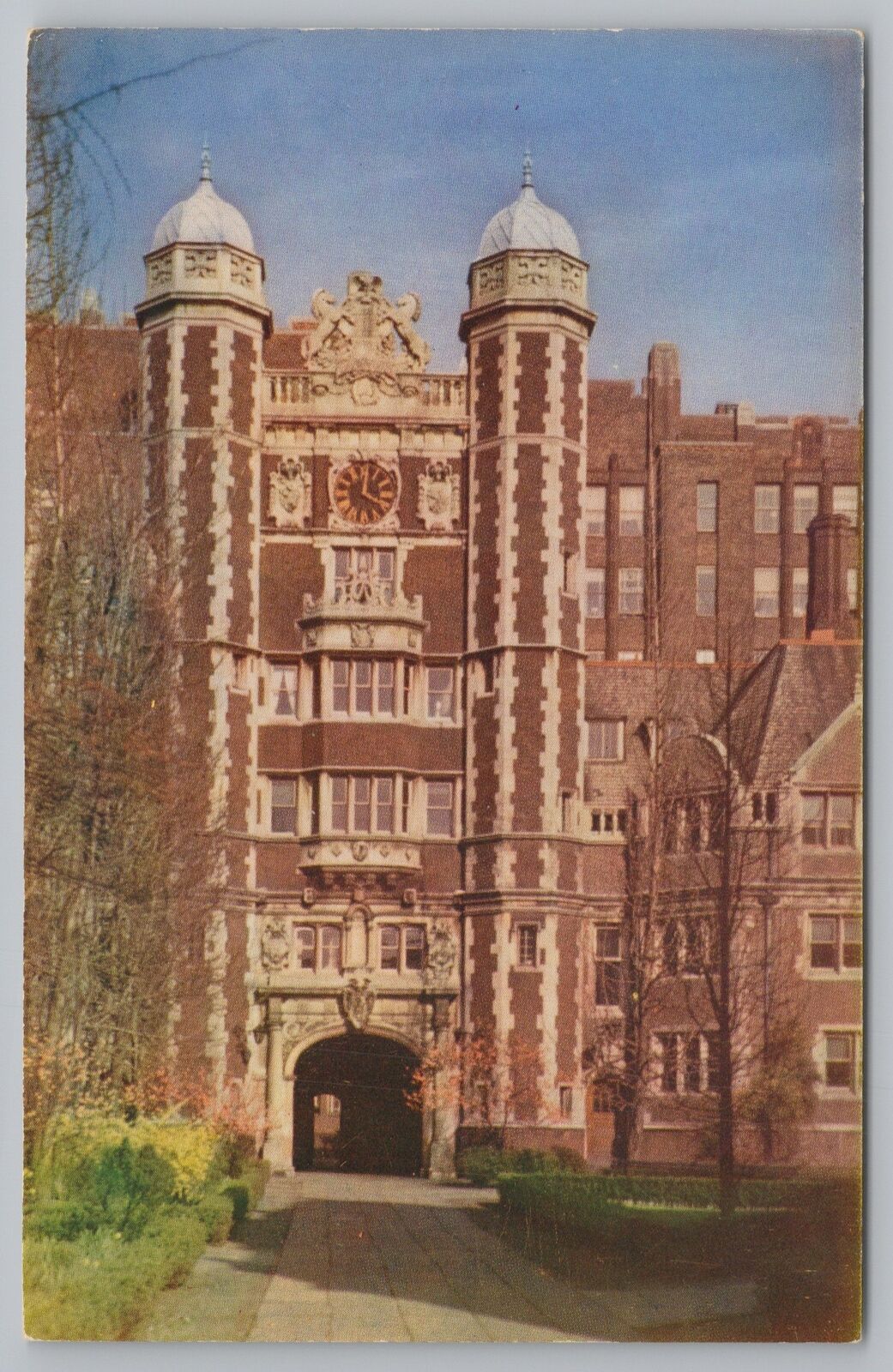
This 1970s postcard of the Provost's Tower is a Kodachrome.
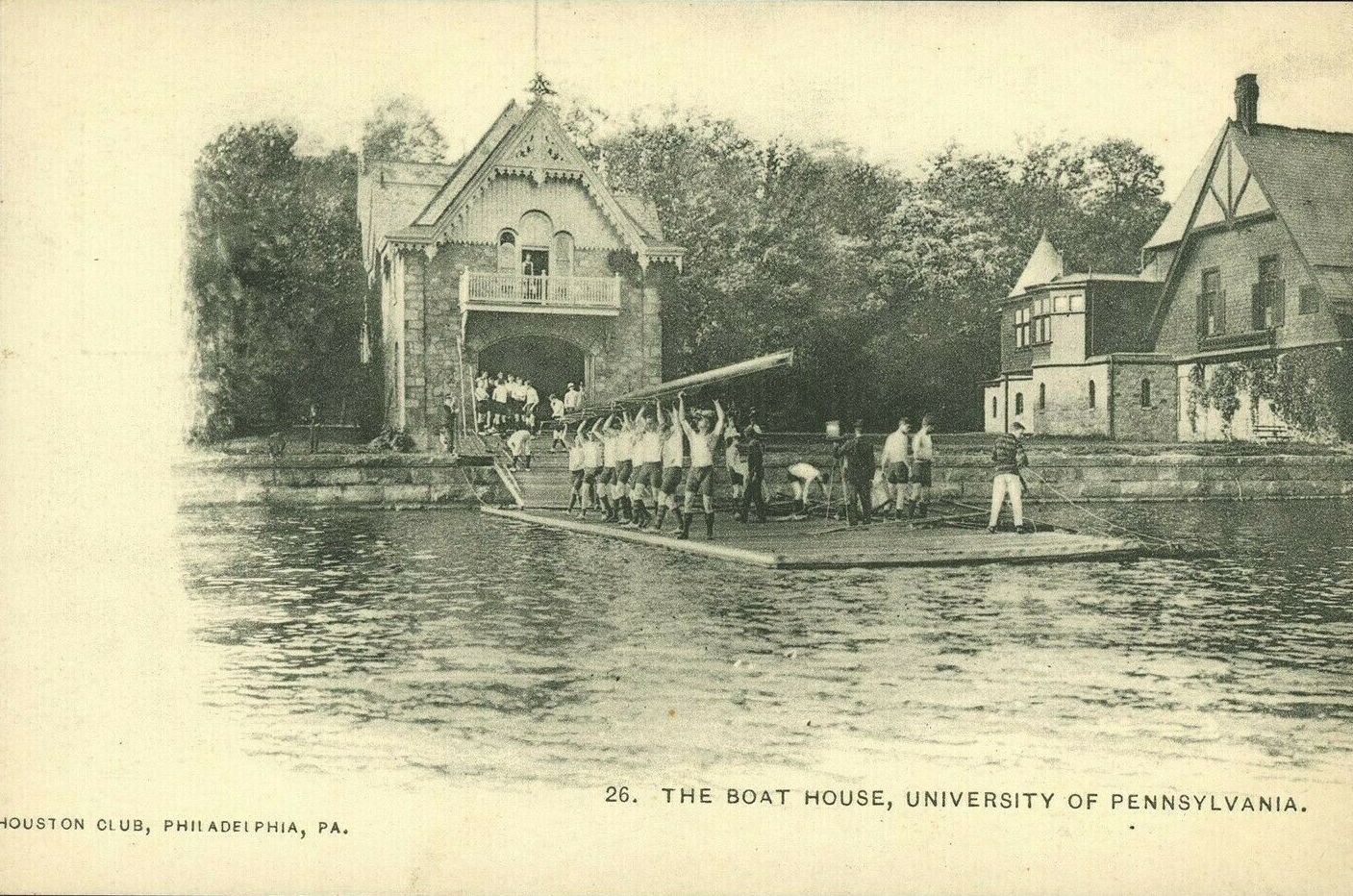
An early postcard of the boat house on the Schuylkill
Oddly enough, there are not many postcards of the Wharton School, which, given the school's prominence and the number of famous graduates it has is somewhat surprising.
We will end where we began, appropriately enough, with Ben Franklin. Below is a modern postcard of the founder sitting on a bench on campus next to this own likeness.
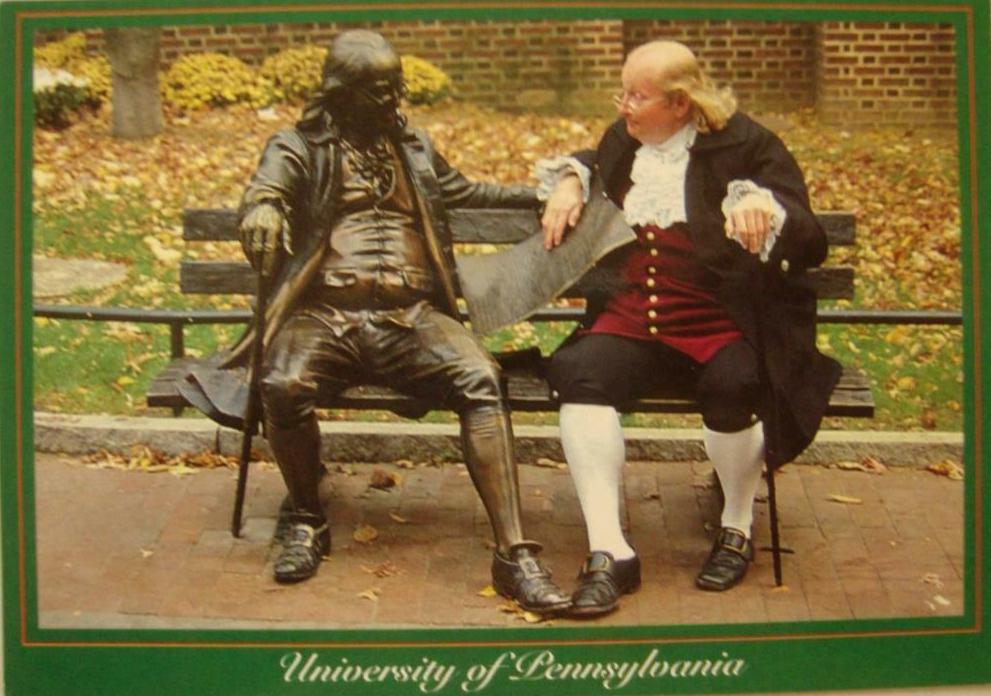
We have a large selection of vintage postcards on our website.